
Home - Search - Browse - Alphabetic Index: 0- 1- 2- 3- 4- 5- 6- 7- 8- 9
A- B- C- D- E- F- G- H- I- J- K- L- M- N- O- P- Q- R- S- T- U- V- W- X- Y- Z
HS 601
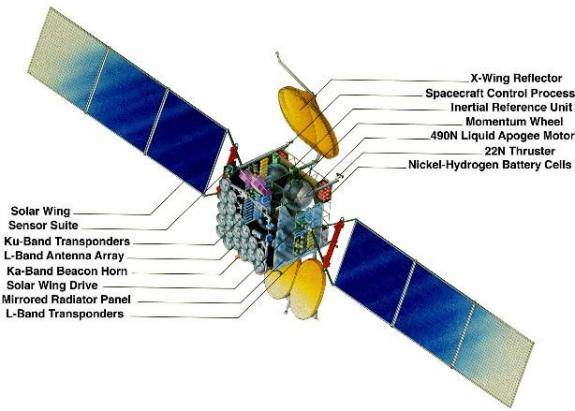
HS 601
Status: Operational 1990. First Launch: 1990-01-09. Last Launch: 2014-01-24. Number: 79 . Gross mass: 4,135 kg (9,116 lb). Height: 2.29 m (7.51 ft). Span: 18.30 m (60.00 ft).
Typically 1658 kg nitrogen tetroxide & MMH in four spheres. Spin-stabilized in transfer orbit. Twin solar wings of three 2.16 x 2.54 m panels carrying large area silicon cells on Kevlar substrate to satisfy 3.3 kW requirement. Eclipse protection provided by Nickel hydrogen batteries. 18 eclipse protected transponders, plus six spares with 63W TWTA. 10.75-10.95 Ghz FSS (&12.5 Ghz BSS) down Ku-band beams, 26 MHz bandwidth, EIRP 50 dBW min, orthogonal polarization, operating in the FSS range
More at: HS 601.
| Optus B1, B2, B3 Communication satellite built by Hughes for Optus Communications Pty., Ltd., Australia. Launched 1992 - 1994. Used the HS-601 bus. |
| Galaxy 4, 7 / HGS 4 Null |
| UFO 1, 2, 3 (UHF-FO Block 1) Null |
| Astra 1C, 1D Communication (Direct Broadcasting) satellite built by Hughes for SES, Luxembourg. Launched 1993 - 1994. Used the HS-601 bus. |
| Solidaridad 1, 2 Communication satellite built by Hughes for Telecomunicaciones de Mexico (Telecomm), Mexico. Launched 1993 - 1994. Used the HS-601 bus. |
| DirecTV 1, 2, 3 / Nimiq 3, 4i Null |
| PAS 2, 3, 3R, 4 / Intelsat 2, 3R, 4 Null |
| APStar 2 Communication satellite built by Hughes for APT Satellite Company Ltd., China. Launched 1995. Used the HS-601 bus. |
| UFO 4, 5, 6, 7 (UHF-FO Block 2) Null |
| AMSC 1 / M-Sat 1 Null |
| JCSat 3, 4 (JCSat R) / Intelsat 26 Null |
| Astra 1E, 1F Communication (Direct Broadcasting) satellite built by Hughes for SES, Luxembourg. Launched 1995 - 1996. Used the HS-601 bus. |
| Galaxy 3R / Anik E2R Null |
| Palapa C1, C2 / HGS 3 / Anatolia 1 / Paksat 1 Null |
| Superbird C Communication satellite built by Hughes for Space Communications Corporation (SCC), Japan. Launched 1997. Used the HS-601 bus. |
| PAS 5( Arabsat 2C( Badr C (Intelsat 5) Null |
| Astra 1G, 1H, 2A, 2C Communication (Direct Broadcasting) satellite built by Hughes / Boeing for SES, Luxembourg. Launched 1997 - 2001. Used the HS-601HP / BSS-601HP bus. |
| JCSat 5, 6 (JCSat 1B, 4A) Null |
| Galaxy 8i, 8iR Communication satellite built by Hughes / Boeing for PanAmSat, USA. Launched 1997. Used the HS-601HP / BSS-601HP bus. |
| AsiaSat 3, 3S / HGS 1 / PAS 22 Null |
| UFO 8, 9, 10 (UHF-FO Block 3) Null |
| Galaxy 10 Communication satellite built by Hughes for PanAmSat, USA. Launched 1998. Used the HS-601HP bus. |
| SATMEX 5 / Eutelsat 115 West A Null |
| PAS 6B / Intelsat 6B Null |
| Orion 3 Communication satellite built by Hughes for Orion Network Systems, USA. Launched 1999. Used the HS-601HP bus. |
| DirecTV 1R Communication (Direct Broadcasting) satellite built by Hughes for DirecTV, USA. Launched 1999. Used the HS-601HP bus. |
| Galaxy 4R, 10R Communication satellite built by Hughes for PanAmSat, USA. Launched 2000. Used the HS-601HP bus. |
| Superbird 4 (Superbird B2) Null |
| ICO F1, ..., F15 Null |
| TDRS 8, 9, 10 (TDRS H, I, J) Null |
| PAS 9, 10 / Intelsat 9, 10 Null |
| DirecTV 4S Communication (Direct Broadcasting) satellite built by Boeing for DirecTV, USA. Launched 2001. Used the BSS-601HP bus. |
| JCSat 8 (JCSat 2A) Null |
| AsiaSat 4 Communication satellite built by Hughes => Boeing for Asia Satellite Telecommunications Company, China. Launched 2003. Used the HS-601HP bus. |
| Galaxy 13 / Horizons 1 Null |
| UFO 11 (UHF-FO Block 4) Null |
| Superbird 6 (Superbird A2) Null |
| GOES N, O, P, Q Meteorology satellite built by Boeing for NOAA, USA. Launched 2006 - 2010. Used the BSS-601 bus. |
| MEASAT 3 Communication satellite built by Boeing for MEASAT Satellite Systems Sdn. Bhd., Malaysia. Launched 2006. Used the BSS-601HP bus. |
| Indostar 2 / ProtoStar 2 / SES 7 Null |
| TDRS 11, 12, 13 (TDRS K, L, M) Null |
| UHF US Navy fleet communications from geostationary orbit; Ultra High Frequency Follow On; used the HS 601 commercial bus. |
Family: Communications, Earth, Geosynchronous orbit, Technology. Country: USA. Engines: R-4D. Spacecraft: Apstar, UHF, Orion. Launch Vehicles: Atlas, Thor, Delta, Proton, Space Shuttle, Ariane, Delta 2 7000, Ariane 44LP, Ariane 44L, Chang Zheng 2E, Atlas I, Ariane 42P, Delta 7925, Ariane 44P, Atlas II, Atlas IIA, Ariane 42L, Atlas IIAS, Proton-K/DM-2M, Delta 8930, Zenit-3SL, Atlas V, Proton-M/Briz-M, Atlas V 401, Delta 4M+(4,2), Delta IV, Atlas 3B. Projects: Asiasat, Astra, DirecTV, Galaxy, JCSAT, Leasat, M-SAT, Measat, Morelos, Palapa, Panamsat, STS, Superbird. Launch Sites: Cape Canaveral, Baikonur, Cape Canaveral LC17B, Cape Canaveral LC36A, Cape Canaveral LC37B, Baikonur LC81/23, Cape Canaveral LC36B, Cape Canaveral LC41, Cape Canaveral LC39A, Kourou, Baikonur LC200/39, Xichang, Kourou ELA2, Xichang LC2, Kiritimati. Agency: Aussat, Hughes. Bibliography: 2, 274, 278, 296, 5, 552, 554, 6, 67, 6572, 12565, 12566, 12567, 12568, 12569, 12570, 12571, 12572, 12573, 12574, 12575, 12576, 12577, 12578, 12579, 12580, 12581, 12582, 12583, 12584, 12585, 12586, 12587, 12588, 12589, 12590, 12591, 12592, 12593, 12594, 12595, 12596, 12597, 12598, 12599, 12600.
 | AMSC-1 Credit: Manufacturer Image |
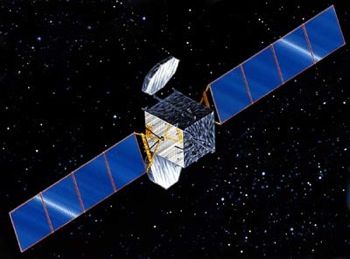 | Apstar 2 Credit: Manufacturer Image |
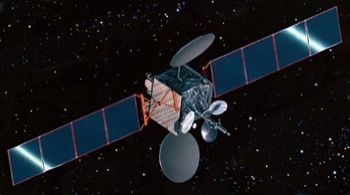 | Asiasat 3 Credit: Manufacturer Image |
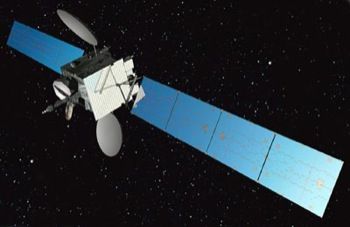 | AsiaSat 4 Credit: Manufacturer Image |
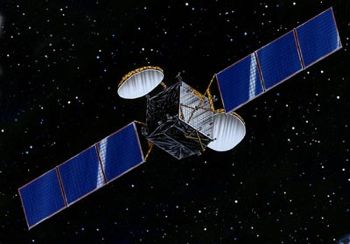 | Astra 1C Credit: Manufacturer Image |
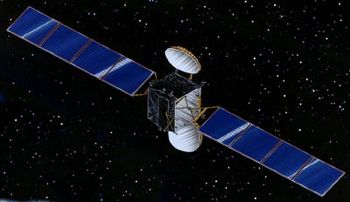 | Astra 1E Credit: Manufacturer Image |
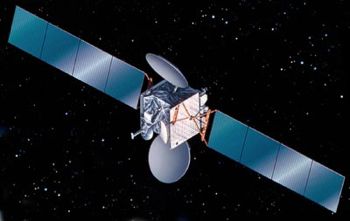 | Astra 1G Credit: Manufacturer Image |
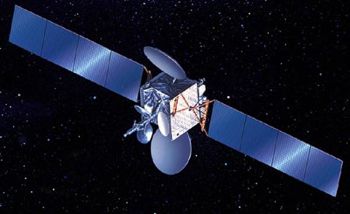 | DirecTV 1R Credit: Manufacturer Image |
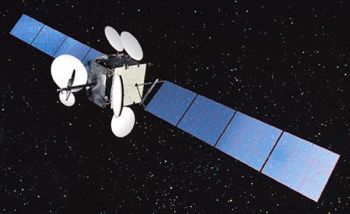 | DirecTV 4S Credit: Manufacturer Image |
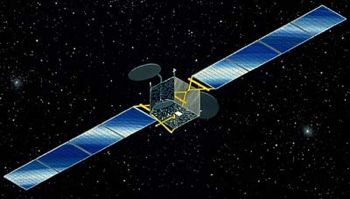 | DBS 1 Credit: Manufacturer Image |
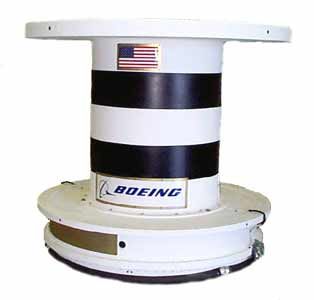 | DM-F3 Credit: Manufacturer Image |
 | Galaxy 10 Credit: Manufacturer Image |
 | Horizons 1 (Galaxy 1 Credit: Manufacturer Image |
 | Galaxy 3R Credit: Manufacturer Image |
 | Galaxy 4 Credit: Manufacturer Image |
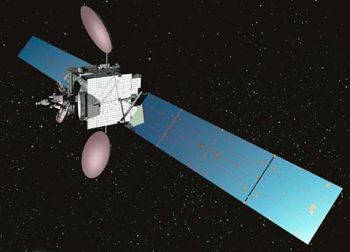 | Galaxy 4R Credit: Manufacturer Image |
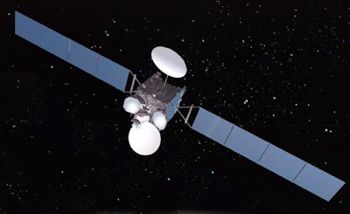 | Protostar 2 / SES 7 Credit: Manufacturer Image |
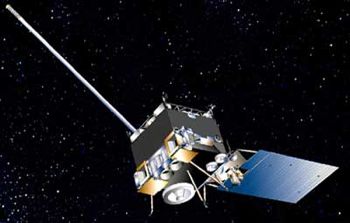 | GOES 15 Credit: Manufacturer Image |
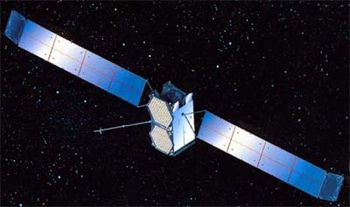 | ICO F1 Credit: Manufacturer Image |
 | JCSAT 3 Credit: Manufacturer Image |
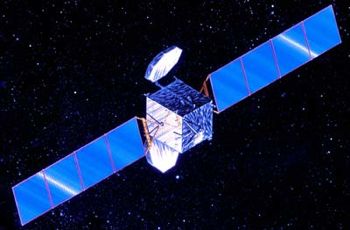 | JCSAT 5 Credit: Manufacturer Image |
 | JCSAT 8 Credit: Manufacturer Image |
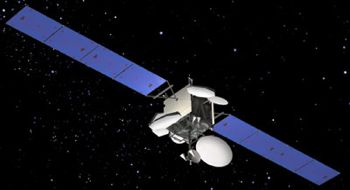 | Measat 3 Credit: Manufacturer Image |
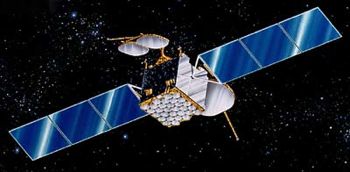 | Optus B1 Credit: Manufacturer Image |
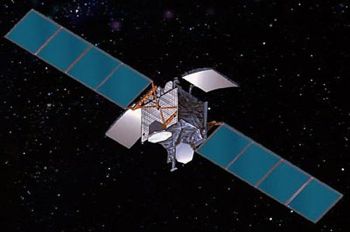 | Orion 3 Credit: Manufacturer Image |
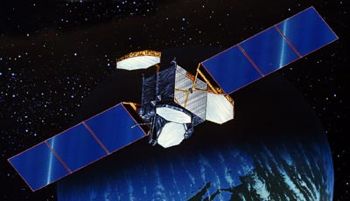 | Palapa C-1 Credit: Manufacturer Image |
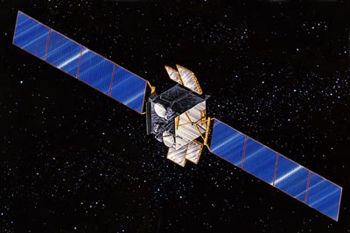 | Panamsat 3R Credit: Manufacturer Image |
 | PAS 6B Credit: Manufacturer Image |
 | PAS 9 Credit: Manufacturer Image |
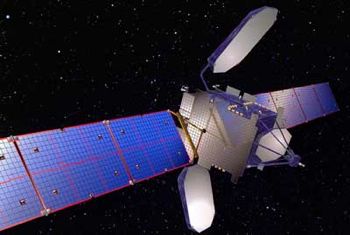 | Satmex 5 Credit: Manufacturer Image |
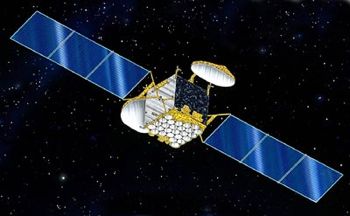 | Solidaridad 1 Credit: Manufacturer Image |
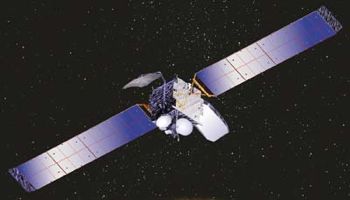 | Superbird 4 Credit: Manufacturer Image |
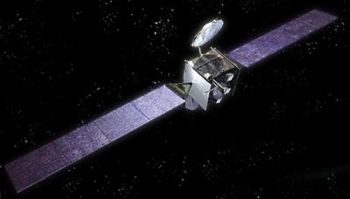 | Superbird 6 Credit: Manufacturer Image |
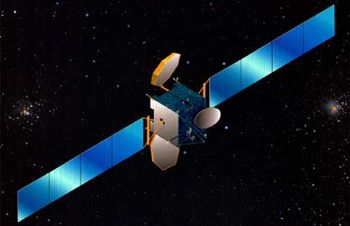 | Superbird C Credit: Manufacturer Image |
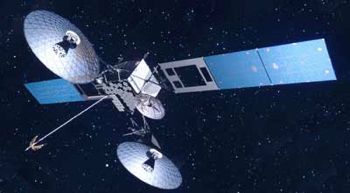 | TDRS 8 Credit: Manufacturer Image |
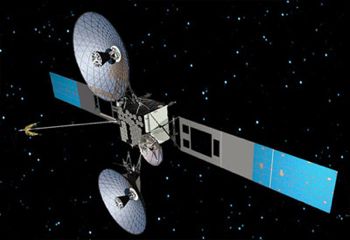 | TDRS 11 Credit: Manufacturer Image |
 | USA 104 Credit: Manufacturer Image |
 | USA 114 Credit: Manufacturer Image |
 | USA 138 Credit: Manufacturer Image |
 | USA 174 Credit: Manufacturer Image |
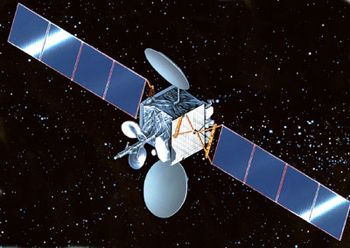 | Panamsat 5 Credit: Manufacturer Image |
1990 January 9 - . 12:35 GMT - . Launch Site: Cape Canaveral. Launch Complex: Cape Canaveral LC39A. Launch Platform: MLP3. LV Family: Shuttle. Launch Vehicle: Space Shuttle.
- Leasat 5 - .
Payload: Columbia F9 / Syncom-4 5 [Orbus-7S]. Mass: 3,400 kg (7,400 lb). Nation: USA.
Agency: HCI.
Program: Leasat.
Class: Communications.
Type: Military communications satellite. Spacecraft: HS 601.
USAF Sat Cat: 20410 . COSPAR: 1990-002B. Apogee: 35,797 km (22,243 mi). Perigee: 35,776 km (22,230 mi). Inclination: 4.40 deg. Period: 1,436.10 min.
Deployed from STS 32 1/10/89; 177 deg W; leased to U.S. government. The Leasat series was developed as a commercial venture to provide dedicated communications services to the U. S. military. Positioned in geosynchronous orbit at 178 deg E in 1990; 72 deg E in 1990-1997; 77 deg E in 1997-1998; 155 deg E in 1998-1999 As of 5 September 2001 located at 155.70 deg E drifting at 0.023 deg W per day. As of 2007 Mar 11 located at 100.05E drifting at 0.003E degrees per day. Additional Details: here....
1990 July 16 - . 00:40 GMT - . Launch Site: Xichang. Launch Complex: Xichang LC2. LV Family: CZ. Launch Vehicle: Chang Zheng 2E.
- HS-601 Model - . Mass: 3,400 kg (7,400 lb). Nation: China. Agency: PRC. Spacecraft: HS 601. COSPAR: 1990-059xx. First launch of new Chinese launch vehicle..
1992 August 13 - . 23:00 GMT - . Launch Site: Xichang. Launch Complex: Xichang LC2. LV Family: CZ. Launch Vehicle: Chang Zheng 2E.
- Optus B1 - .
Payload: Aussat B1. Mass: 2,760 kg (6,080 lb). Nation: Australia.
Agency: Optus.
Program: Aussat.
Class: Communications.
Type: Military communications satellite. Spacecraft: HS 601.
USAF Sat Cat: 22087 . COSPAR: 1992-054A. Apogee: 35,800 km (22,200 mi). Perigee: 35,774 km (22,228 mi). Inclination: 0.00 deg. Period: 1,436.10 min.
Stationed at 160 deg E. Commercial communications. Longitude 160 +/- 0.05 deg E. Launched fromn China. Positioned in geosynchronous orbit at 160 deg E in 1992-1999 As of 1 September 2001 located at 159.98 deg E drifting at 0.009 deg W per day. As of 2007 Mar 11 located at 163.63E drifting at 0.044E degrees per day.
1992 October 28 - . 00:15 GMT - . Launch Site: Kourou. Launch Complex: Kourou ELA2. LV Family: Ariane. Launch Vehicle: Ariane 42P.
- Galaxy 7 - .
Mass: 2,968 kg (6,543 lb). Nation: USA.
Agency: HCI.
Program: Galaxy.
Class: Communications.
Type: Civilian communications satellite. Spacecraft: HS 601.
Duration: 2,947.00 days. USAF Sat Cat: 22205 . COSPAR: 1992-072A. Apogee: 35,968 km (22,349 mi). Perigee: 35,917 km (22,317 mi). Inclination: 1.50 deg. Period: 1,444.10 min.
Geostationary at 91 deg W. The Galaxy 7 satellite failed on November 22, 2000, the third such satellite to fall victim to a design flaw in the on-board computers. Positioned in geosynchronous orbit at 91 deg W in 1992-1999 As of 1 September 2001 located at 32.55 deg E drifting at 2.022 deg W per day. As of 2007 Mar 10 located at 141.47W drifting at 2.077W degrees per day.
1992 December 21 - . 11:21 GMT - . Launch Site: Xichang. Launch Complex: Xichang LC2. LV Family: CZ. Launch Vehicle: Chang Zheng 2E. FAILURE: Shortcomings in the guidance system lead to the vehicle not anticipating the true effects of horizontal wind-shear once the mountains surrounding the launch site were cleared. This caused the nose fairing to collapse 45 seconds after launch.. Failed Stage: G.
- Aussat B2 / Optus B2 - . Payload: Optus B2 / Star 63F. Mass: 2,760 kg (6,080 lb). Nation: Australia. Agency: Hughes. Program: Aussat. Class: Communications. Type: Military communications satellite. Spacecraft: HS 601. Decay Date: 1995-06-29 . USAF Sat Cat: 22278 . COSPAR: 1992-090A. Apogee: 816 km (507 mi). Perigee: 206 km (128 mi). Inclination: 28.10 deg. Period: 94.90 min. Despite collapse of the nose fairing and near-desctruction of the payload, the launch vehicle continued on to place the wreckage of Optus-B2, and the Star-63F Kick-Motor into low earth orbit..
1993 March 25 - . 21:38 GMT - . Launch Site: Cape Canaveral. Launch Complex: Cape Canaveral LC36B. LV Family: Atlas. Launch Vehicle: Atlas I. FAILURE: Atlas engine failure. Loss of booster engine thrust resulted in a lower-than planned 1560 km x 1900 km orbit. Failed Stage: 1.
- UHF F1 - .
Payload: UHF F/O F1. Mass: 2,866 kg (6,318 lb). Nation: USA.
Agency: HCI.
Program: UHF.
Class: Communications.
Type: Military communications satellite. Spacecraft: HS 601.
Completed Operations Date: 1993-07-01 . USAF Sat Cat: 22563 . COSPAR: 1993-015A. Apogee: 36,098 km (22,430 mi). Perigee: 36,053 km (22,402 mi). Inclination: 21.10 deg. Period: 1,450.90 min.
US Navy communications; Ultra High Frequency Follow On; unusable orbit. Spacecraft engaged in practical applications and uses of space technology such as weather or communication (US Cat C). Launch vehicle was to have put payload into subsynchronous earth orbit with MRS trajectory option. As of 28 August 2001 located at 45.55 deg W drifting at 3.676 deg W per day. As of 2007 Mar 10 located at 95.89E drifting at 3.687W degrees per day.
1993 May 12 - . 00:56 GMT - . Launch Site: Kourou. Launch Complex: Kourou ELA2. LV Family: Ariane. Launch Vehicle: Ariane 42L.
- Astra 1C - .
Mass: 2,790 kg (6,150 lb). Nation: Europe.
Agency: SES.
Program: Astra.
Class: Communications.
Type: Civilian communications satellite. Spacecraft: HS 601.
USAF Sat Cat: 22653 . COSPAR: 1993-031A. Apogee: 35,798 km (22,243 mi). Perigee: 35,777 km (22,230 mi). Inclination: 0.00 deg. Period: 1,436.10 min.
Stationed at 1.2 deg E. TV distribution services to Western Europe and the Canary Islands under franchise from the Grand Duchy of Luxembourg. Contracted and controlled by the private company formed in 1985 called Société Europíenne des Satellites (SES). This is the third in a series of 4 medium power satellites, and will act primarily as Astra 1A's backup. Spacecraft: HS-601 platform.3-axis unified ARC 22 N and one Marquardt 490 N bipropellant thrusters, Sun and Barnes Earth sensors and two 61 Nms 2-axis gimballed momentum bias wheels.1658 kg nitrogen tetroxide & MMH in four spheres. Spin-stabilised in transfer orbit. Twin solar wings of three 2.16 x 2.54 m panels carrying large area silicon cells on Kevlar substrate to satisfy 3.3 kW requirement. Eclipse protection provided by Nickel hydrogen batteries. Payload: 18 eclipse protected transponders, plus six spares with 63W TWTA 10.95-11.200 Ghz down Ku-band European beams in 250 Mhz band adjacent (below) to Astra 1A, 26 Mhz bandwidth, eirp 50 dBW min, orthogonal polarisation, operating in the FSS range Positioned in geosynchronous orbit at 19 deg E in 1993-1999 As of 5 September 2001 located at 19.21 deg E drifting at 0.002 deg W per day. As of 2007 Mar 11 located at 4.54E drifting at 0.051E degrees per day.
1993 June 25 - . 00:18 GMT - . Launch Site: Kourou. Launch Complex: Kourou ELA2. LV Family: Ariane. Launch Vehicle: Ariane 42P.
- Galaxy 4 - .
Payload: Galaxy 4H. Mass: 2,988 kg (6,587 lb). Nation: USA.
Agency: HCI.
Program: Galaxy.
Class: Communications.
Type: Civilian communications satellite. Spacecraft: HS 601.
USAF Sat Cat: 22694 . COSPAR: 1993-039A. Apogee: 35,829 km (22,263 mi). Perigee: 35,743 km (22,209 mi). Inclination: 3.40 deg. Period: 1,436.10 min.
Geostationary at 99 deg W. Spacecraft engaged in practical applications and uses of space technology such as weather or communication (US Cat C). Positioned in geosynchronous orbit at 99 deg W in 1993-1998 As of 6 September 2001 located at 76.26 deg E drifting at 0.041 deg W per day. As of 2007 Mar 10 located at 77.40E drifting at 0.010E degrees per day.
1993 September 3 - . 11:17 GMT - . Launch Site: Cape Canaveral. Launch Complex: Cape Canaveral LC36B. LV Family: Atlas. Launch Vehicle: Atlas I.
- USA 95 - .
Payload: UHF F/O F2. Mass: 2,844 kg (6,269 lb). Nation: USA.
Agency: HCI.
Program: UHF.
Class: Communications.
Type: Military communications satellite. Spacecraft: HS 601.
USAF Sat Cat: 22787 . COSPAR: 1993-056A. Apogee: 35,805 km (22,248 mi). Perigee: 35,767 km (22,224 mi). Inclination: 5.00 deg. Period: 1,436.10 min.
US Navy communications. Spacecraft engaged in practical applications and uses of space technology such as weather or communication (US Cat C). Launch vehicle put payload into subsynchronous earth orbit with MRS trajectory option. Positioned in geosynchronous orbit at 72 deg E in 1993-1999.
1993 November 20 - . 01:17 GMT - . Launch Site: Kourou. Launch Complex: Kourou ELA2. LV Family: Ariane. Launch Vehicle: Ariane 44LP.
- Solidaridad 1 - . Mass: 2,776 kg (6,120 lb). Nation: Mexico. Agency: Tele Mex. Program: Morelos. Class: Communications. Type: Civilian communications satellite. Spacecraft: HS 601. USAF Sat Cat: 22911 . COSPAR: 1993-073A. Apogee: 35,811 km (22,251 mi). Perigee: 35,766 km (22,223 mi). Inclination: 1.50 deg. Period: 1,436.20 min. Stationed at 109.2 deg W. Positioned in geosynchronous orbit at 109 deg W in 1993-1999 As of 5 September 2001 located at 101.71 deg W drifting at 0.010 deg E per day. As of 2007 Mar 10 located at 102.54W drifting at 0.027W degrees per day..
1993 December 18 - . 01:27 GMT - . Launch Site: Kourou. Launch Complex: Kourou ELA2. LV Family: Ariane. Launch Vehicle: Ariane 44L.
- DBS 1 - .
Mass: 2,860 kg (6,300 lb). Nation: USA.
Agency: DirecTV.
Program: DirecTV.
Class: Communications.
Type: Civilian communications satellite. Spacecraft: HS 601.
USAF Sat Cat: 22930 . COSPAR: 1993-078A. Apogee: 35,798 km (22,243 mi). Perigee: 35,775 km (22,229 mi). Inclination: 0.00 deg. Period: 1,436.10 min.
Stationed at 101.2 deg W. DirecTV, Inc. is a subsidiary of Hughes Communications and offers commercial satellite television service to the US. The orbital part of the system consists of 3 Hughes-built geosynchronous satellites. Broadcast services began in mid-1994. Competitors include the similar Primestar and USSB services, as well as older C-band satellite services and cable TV companies. Spacecraft: DirecTV uses the Hughes HS-601 spacecraft design.3-Axis stabilised, zero momentum biased control system. Two solar arrays (4 panels each side) span 31 meters and generate 4.3 kW power. Payload: The 2.5 m diameter graphite transmit reflector performs beam shaping.16 x 120 watt Ka-Band (12.2 - 12.7 GHz) transponders with 48-53 dBw EIRP and 24 MHz bandwidth. Power is higher in areas with heavy rain. The high power combined with Reed Solomon error correction coding allow the use of small 18 inch antennas by customers.
Financial/Operational:
FCC approved Direct Broadcast Satellites in 1986. By 1997 DirecTV had 2.6 million of 5.0 million US direct broadcast television subscribers. Direct Broadcast Satellites cost $ 175 million each and have 150 video channels. Positioned in geosynchronous orbit at 101 deg W in 1994-1999; 110 deg W in 1999-2000 As of 6 September 2001 located at 109.78 deg W drifting at 0.004 deg W per day. As of 2007 Mar 10 located at 72.51W drifting at 0.011W degrees per day.
1994 June 24 - . 13:50 GMT - . Launch Site: Cape Canaveral. Launch Complex: Cape Canaveral LC36B. LV Family: Atlas. Launch Vehicle: Atlas I.
- USA 104 - . Payload: UHF F/O F3. Mass: 2,847 kg (6,276 lb). Nation: USA. Agency: HCI. Program: UHF. Class: Communications. Type: Military communications satellite. Spacecraft: HS 601. USAF Sat Cat: 23132 . COSPAR: 1994-035A. Apogee: 35,795 km (22,241 mi). Perigee: 35,776 km (22,230 mi). Inclination: 4.81 deg. Period: 1,436.05 min. US Navy communications . Stationed at 14.38 deg W 1995-1999. Launch vehicle put payload into subsynchronous earth orbit with MRS trajectory option..
1994 July 8 - . 23:05 GMT - . Launch Site: Kourou. Launch Complex: Kourou ELA2. LV Family: Ariane. Launch Vehicle: Ariane 44L.
- Panamsat 2 - . Payload: PAS K1. Mass: 2,290 kg (5,040 lb). Nation: USA. Agency: Panamsat. Program: Panamsat. Class: Communications. Type: Civilian communications satellite. Spacecraft: HS 601. USAF Sat Cat: 23175 . COSPAR: 1994-040A. Apogee: 35,799 km (22,244 mi). Perigee: 35,772 km (22,227 mi). Inclination: 0.0400 deg. Period: 1,436.07 min. Stationed at 168.97 deg E. Positioned in geosynchronous orbit at 169 deg E in 1994-1999 As of 1 September 2001 located at 169.03 deg E drifting at 0.002 deg W per day. As of 2007 Mar 8 located at 168.96E drifting at 0.005W degrees per day..
1994 August 3 - . 23:57 GMT - . Launch Site: Cape Canaveral. Launch Complex: Cape Canaveral LC36A. LV Family: Atlas. Launch Vehicle: Atlas IIA.
- DBS 2 - .
Mass: 2,860 kg (6,300 lb). Nation: USA.
Agency: DirecTV.
Program: DirecTV.
Class: Communications.
Type: Civilian communications satellite. Spacecraft: HS 601.
USAF Sat Cat: 23192 . COSPAR: 1994-047A. Apogee: 35,797 km (22,243 mi). Perigee: 35,776 km (22,230 mi). Inclination: 0.0100 deg. Period: 1,436.11 min.
Commercial TV broadcast. Stationed at 100.79 deg W. Launch vehicle put payload into supersynchronous earth orbit with MRS trajectory option. Positioned in geosynchronous orbit at 101 deg W in 1994-1999 As of 5 September 2001 located at 100.81 deg W drifting at 0.010 deg W per day. As of 2007 Mar 11 located at 91.17W drifting at 0.006W degrees per day.
1994 August 27 - . 23:10 GMT - . Launch Site: Xichang. Launch Complex: Xichang LC2. LV Family: CZ. Launch Vehicle: Chang Zheng 2E.
- Optus B3 - .
Mass: 2,760 kg (6,080 lb). Nation: Australia.
Agency: Optus.
Program: Aussat.
Class: Communications.
Type: Military communications satellite. Spacecraft: HS 601.
USAF Sat Cat: 23227 . COSPAR: 1994-055A. Apogee: 35,855 km (22,279 mi). Perigee: 35,718 km (22,194 mi). Inclination: 0.00 deg. Period: 1,436.10 min.
Telephone; TV; mobile communications; air traffic control. Stationed at 156 deg deg E. Positioned in geosynchronous orbit at 152 deg E in 1994-1995; 156 deg E in 1995-1999 As of 5 September 2001 located at 156.00 deg E drifting at 0.007 deg W per day. As of 2007 Mar 9 located at 151.97E drifting at 0.007W degrees per day.
1994 October 8 - . 01:07 GMT - . Launch Site: Kourou. Launch Complex: Kourou ELA2. LV Family: Ariane. Launch Vehicle: Ariane 44L.
- Solidaridad 2 - .
Mass: 2,776 kg (6,120 lb). Nation: Mexico.
Agency: Tele Mex.
Program: Morelos.
Class: Communications.
Type: Civilian communications satellite. Spacecraft: HS 601.
USAF Sat Cat: 23313 . COSPAR: 1994-065A. Apogee: 35,796 km (22,242 mi). Perigee: 35,776 km (22,230 mi). Inclination: 0.00 deg. Period: 1,436.10 min.
18 C-Band transponders. Stationed at 113.06 deg W. Positioned in geosynchronous orbit at 113 deg W in 1994-1999 As of 5 September 2001 located at 112.96 deg W drifting at 0.003 deg W per day. As of 2007 Mar 11 located at 114.89W drifting at 0.001W degrees per day.
1994 November 1 - . 00:37 GMT - . Launch Site: Kourou. Launch Complex: Kourou ELA2. LV Family: Ariane. Launch Vehicle: Ariane 42P.
- Astra 1D - .
Mass: 2,924 kg (6,446 lb). Nation: Europe.
Agency: SES.
Program: Astra.
Class: Communications.
Type: Civilian communications satellite. Spacecraft: HS 601.
USAF Sat Cat: 23331 . COSPAR: 1994-070A. Apogee: 35,796 km (22,242 mi). Perigee: 35,773 km (22,228 mi). Inclination: 0.0200 deg. Period: 1,436.00 min.
European DBS and radio. Stationed at 19.29 deg E. TV distribution services to Western Europe and the Canary Islands under franchise from the Grand Duchy of Luxembourg. Contracted and controlled by the private company formed in 1985 called Société Europíenne des Satellites (SES). This is the last in a series of 4 medium power satellites, and will act primarily as Astra 1B and 1C's backup. It will also carry four 12.5 Ghz BSS transponders that can be combined for HDTV. Spacecraft: HS-601 platform.3-axis unified ARC 22 N and one Marquardt 490 N bipropellant thrusters, Sun and Barnes Earth sensors and two 61 Nms 2-axis gimballed momentum bias wheels.1658 kg nitrogen tetroxide & MMH in four spheres. Spin-stabilised in transfer orbit. Twin solar wings of three 2.16 x 2.54 m panels carrying large area silicon cells on Kevlar substrate to satisfy 3.3 kW requirement. Eclipse protection provided by Nickel hydrogen batteries. Payload: 18 eclipse protected transponders, plus six spares with 63W TWTA 10.75-10.95 Ghz FSS (&12.5 Ghz BSS) down Ku-band European beams in 250 Mhz band adjacent (below) to Astra 1C, 26 Mhz bandwidth, eirp 50 dBW min, orthogonal polarisation, operating in the FSS range Positioned in geosynchronous orbit at 19 deg E in 1995-1998; 28 deg E in 1998; 19 deg E in 1998-1999; 28 deg E in 2000.- As of 3 September 2001 located at 24.18 deg E drifting at 0.006 deg E per day. As of 2007 Mar 10 located at 23.50E drifting at 0.008W degrees per day.
1994 December 1 - . 22:57 GMT - . Launch Site: Kourou. Launch Complex: Kourou ELA2. LV Family: Ariane. Launch Vehicle: Ariane 42P. FAILURE: Stage 3 gas generator.. Failed Stage: U.
- Panamsat 3 - . Payload: PAS K2. Mass: 2,920 kg (6,430 lb). Nation: USA. Agency: Panamsat. Program: Panamsat. Class: Communications. Type: Civilian communications satellite. Spacecraft: HS 601.
1995 January 25 - . 22:40 GMT - . Launch Site: Xichang. Launch Complex: Xichang LC2. LV Family: CZ. Launch Vehicle: Chang Zheng 2E. FAILURE: Shortcomings in the guidance system lead to the vehicle not anticipating the true effects of horizontal wind-shear once the mountains surrounding the launch site were cleared. This caused the nose fairing to collapse and the spacecraft to be destroyed.. Failed Stage: G.
- Apstar 2 - .
Mass: 2,830 kg (6,230 lb). Nation: China.
Agency: PRC.
Program: Apstar.
Class: Communications.
Type: Civilian communications satellite. Spacecraft: HS 601.
Decay Date: 1995-01-25 .
Because the Apstar failure happened a few seconds later than Optus, the consequences were catastrophic. The vehicle was destroyed, and the falling wreckage landed on a village down-range of the launch site, killing at least 20 and perhaps as many as 120 people.
1995 January 29 - . 01:25 GMT - . Launch Site: Cape Canaveral. Launch Complex: Cape Canaveral LC36A. LV Family: Atlas. Launch Vehicle: Atlas II.
- USA 108 - . Payload: UHF F/O F4. Mass: 3,023 kg (6,664 lb). Nation: USA. Agency: HCI. Program: UHF. Class: Communications. Type: Military communications satellite. Spacecraft: HS 601. USAF Sat Cat: 23467 . COSPAR: 1995-003A. Apogee: 35,799 km (22,244 mi). Perigee: 35,775 km (22,229 mi). Inclination: 2.20 deg. Period: 1,436.10 min. UHF Follow-On #4; US Navy communications . Stationed at 177.0 deg W. Launch vehicle put payload into subsynchronous earth orbit with MRS trajectory option. Positioned in geosynchronous orbit at 177 deg W in 1995-1999..
1995 April 7 - . 23:47 GMT - . Launch Site: Cape Canaveral. Launch Complex: Cape Canaveral LC36A. LV Family: Atlas. Launch Vehicle: Atlas IIA.
- AMSC-1 - .
Mass: 2,700 kg (5,900 lb). Nation: USA.
Agency: AMSC.
Class: Communications.
Type: Civilian communications satellite. Spacecraft: HS 601.
USAF Sat Cat: 23553 . COSPAR: 1995-019A. Apogee: 35,796 km (22,242 mi). Perigee: 35,777 km (22,230 mi). Inclination: 0.00 deg. Period: 1,436.10 min.
Mobile communicaitons. Stationed at 101.1 deg W. Launch vehicle put payload into supersynchronous earth orbit with MRS trajectory option. Positioned in geosynchronous orbit at 101 deg W in 1995-1999 As of 5 September 2001 located at 101.01 deg W drifting at 0.024 deg W per day. As of 2007 Mar 11 located at 100.99W drifting at 0.003W degrees per day.
1995 May 31 - . 15:27 GMT - . Launch Site: Cape Canaveral. Launch Complex: Cape Canaveral LC36A. LV Family: Atlas. Launch Vehicle: Atlas II.
- USA 111 - . Payload: UHF F/O F5-EHF. Mass: 3,015 kg (6,646 lb). Nation: USA. Agency: USN. Program: UHF. Class: Communications. Type: Military communications satellite. Spacecraft: HS 601. USAF Sat Cat: 23589 . COSPAR: 1995-027A. Apogee: 35,796 km (22,242 mi). Perigee: 35,774 km (22,228 mi). Inclination: 4.80 deg. Period: 1,436.10 min. UHF Follow-On #5; US Navy communications . Stationed at 72.3 deg E. Launch vehicle put payload into subsynchronous earth orbit with MRS trajectory option. Positioned in geosynchronous orbit at 72 deg E in 1995-1999..
1995 June 10 - . 00:24 GMT - . Launch Site: Kourou. Launch Complex: Kourou ELA2. LV Family: Ariane. Launch Vehicle: Ariane 42P.
- DBS 3 - . Mass: 2,934 kg (6,468 lb). Nation: USA. Agency: DirecTV. Program: DirecTV. Class: Communications. Type: Civilian communications satellite. Spacecraft: HS 601. USAF Sat Cat: 23598 . COSPAR: 1995-029A. Apogee: 35,789 km (22,238 mi). Perigee: 35,784 km (22,235 mi). Inclination: 0.00 deg. Period: 1,436.10 min. Commercial TV. Stationed at 101.0 deg W. Positioned in geosynchronous orbit at 101 deg W in 1995-1999 As of 5 September 2001 located at 100.90 deg W drifting at 0.012 deg W per day. As of 2007 Mar 10 located at 82.00W drifting at 0.004W degrees per day..
1995 August 3 - . 22:58 GMT - . Launch Site: Kourou. Launch Complex: Kourou ELA2. LV Family: Ariane. Launch Vehicle: Ariane 42L.
- Panamsat 4 - .
Payload: PAS K3. Mass: 3,043 kg (6,708 lb). Nation: USA.
Agency: Panamsat.
Program: Panamsat.
Class: Communications.
Type: Civilian communications satellite. Spacecraft: HS 601.
USAF Sat Cat: 23636 . COSPAR: 1995-040A. Apogee: 35,797 km (22,243 mi). Perigee: 35,776 km (22,230 mi). Inclination: 0.00 deg. Period: 1,436.10 min.
16 C-Band, 24 Ku-Band transponders; 320 radio + 120 DirecTV channels. Stationed at 68.5 deg E. Positioned in geosynchronous orbit at 68 deg E in 1995-1999 As of 5 September 2001 located at 72.03 deg E drifting at 0.003 deg W per day. As of 2007 Mar 11 located at 72.00E drifting at 0.003W degrees per day.
1995 August 29 - . 00:53 GMT - . Launch Site: Cape Canaveral. Launch Complex: Cape Canaveral LC36B. LV Family: Atlas. Launch Vehicle: Atlas IIAS.
- JCSAT 3 - .
Mass: 1,841 kg (4,058 lb). Nation: Japan.
Agency: JSAT.
Program: JCSAT.
Class: Communications.
Type: Civilian communications satellite. Spacecraft: HS 601.
USAF Sat Cat: 23649 . COSPAR: 1995-043A. Apogee: 35,794 km (22,241 mi). Perigee: 35,779 km (22,231 mi). Inclination: 0.00 deg. Period: 1,436.20 min.
8 transponders for digital TV. Stationed at 128.1 deg E. Launch vehicle put payload into supersynchronous earth orbit with IFR/MRS trajectory option. Positioned in geosynchronous orbit at 128 deg E in 1995-1999 As of 5 September 2001 located at 128.05 deg E drifting at 0.005 deg E per day. As of 2007 Feb 20 located at 126.99E drifting at 0.144W degrees per day.
1995 October 19 - . 00:38 GMT - . Launch Site: Kourou. Launch Complex: Kourou ELA2. LV Family: Ariane. Launch Vehicle: Ariane 42L.
- Astra 1E - .
Mass: 2,700 kg (5,900 lb). Nation: Europe.
Agency: SES.
Program: Astra.
Class: Communications.
Type: Civilian communications satellite. Spacecraft: HS 601.
USAF Sat Cat: 23686 . COSPAR: 1995-055A. Apogee: 35,799 km (22,244 mi). Perigee: 35,774 km (22,228 mi). Inclination: 0.00 deg. Period: 1,436.10 min.
Western Europe digital TV; 18 Ku-band transponders. Stationed at 19.2 deg E. Positioned in geosynchronous orbit at 19 deg E in 1995-1999 As of 5 September 2001 located at 19.16 deg E drifting at 0.002 deg W per day. As of 2007 Mar 10 located at 19.18E drifting at 0.019W degrees per day.
1995 October 22 - . 08:00 GMT - . Launch Site: Cape Canaveral. Launch Complex: Cape Canaveral LC36A. LV Family: Atlas. Launch Vehicle: Atlas II.
- USA 114 - . Payload: UHF F/O F6-EHF. Mass: 3,015 kg (6,646 lb). Nation: USA. Agency: USN. Program: UHF. Class: Communications. Type: Military communications satellite. Spacecraft: HS 601. USAF Sat Cat: 23696 . COSPAR: 1995-057A. Apogee: 35,797 km (22,243 mi). Perigee: 35,776 km (22,230 mi). Inclination: 5.00 deg. Period: 1,436.10 min. UHF Follow-On #6; US Navy communications. Stationed at 105.3 deg W. Launch vehicle put payload into subsynchronous earth orbit with MRS trajectory option. Positioned in geosynchronous orbit at 105 deg W in 1995-1999..
1995 December 15 - . 00:23 GMT - . Launch Site: Cape Canaveral. Launch Complex: Cape Canaveral LC36A. LV Family: Atlas. Launch Vehicle: Atlas IIA.
- Galaxy 3R - .
Payload: HS 376. Mass: 2,980 kg (6,560 lb). Nation: USA.
Agency: HCI.
Program: Galaxy.
Class: Communications.
Type: Civilian communications satellite. Spacecraft: HS 601.
USAF Sat Cat: 23741 . COSPAR: 1995-069A. Apogee: 35,799 km (22,244 mi). Perigee: 35,774 km (22,228 mi). Inclination: 0.00 deg. Period: 1,436.10 min.
Stationed at 95 deg W; 24 C-band, 24 Ku-band transponders; TV for Caribbean and Central America. Launch vehicle put payload into subsynchronous earth orbit with MRS trajectory option. Positioned in geosynchronous orbit at 95 deg W in 1996-1999 As of 3 September 2001 located at 95.05 deg W drifting at 0.008 deg W per day. As of 2007 Mar 9 located at 132.80W drifting at 0.084W degrees per day.
1996 January 12 - . 23:10 GMT - . Launch Site: Kourou. Launch Complex: Kourou ELA2. LV Family: Ariane. Launch Vehicle: Ariane 44L.
- Panamsat 3R - . Payload: PAS K4. Mass: 2,900 kg (6,300 lb). Nation: USA. Agency: Panamsat. Program: Panamsat. Class: Communications. Type: Civilian communications satellite. Spacecraft: HS 601. USAF Sat Cat: 23764 . COSPAR: 1996-002A. Apogee: 35,796 km (22,242 mi). Perigee: 35,779 km (22,231 mi). Inclination: 0.00 deg. Period: 1,436.20 min. Geostationary at 43.0W. Positioned in geosynchronous orbit at 43 deg W in 1996-1999 As of 5 September 2001 located at 42.97 deg W drifting at 0.008 deg W per day. As of 2007 Mar 10 located at 42.99W drifting at 0.012W degrees per day..
1996 February 1 - . 01:15 GMT - . Launch Site: Cape Canaveral. Launch Complex: Cape Canaveral LC36B. LV Family: Atlas. Launch Vehicle: Atlas IIAS.
- Palapa C-1 - .
Payload: Palapa C1. Mass: 3,000 kg (6,600 lb). Nation: Indonesia.
Agency: Satelind.
Program: Palapa.
Class: Communications.
Type: Civilian communications satellite. Spacecraft: HS 601.
USAF Sat Cat: 23779 . COSPAR: 1996-006A. Apogee: 35,798 km (22,243 mi). Perigee: 35,777 km (22,230 mi). Inclination: 0.00 deg. Period: 1,436.10 min.
30 C-band, 6 Ku-band transponders. Geostationary at 150.4E. Launch vehicle put payload into supersynchronous earth orbit with IFR/MRS trajectory option. Positioned in geosynchronous orbit at 113 deg E in 1996; 150 deg E in 1996-1999 As of 5 September 2001 located at 50.03 deg E drifting at 0.006 deg E per day. As of 2007 Mar 11 located at 38.04E drifting at 0.007E degrees per day.
1996 April 8 - . 23:09 GMT - . Launch Site: Baikonur. Launch Complex: Baikonur LC81/23. LV Family: Proton. Launch Vehicle: Proton-K/DM-2M.
- Astra 1F - . Mass: 3,010 kg (6,630 lb). Nation: Europe. Agency: SES. Program: Astra. Class: Communications. Type: Civilian communications satellite. Spacecraft: HS 601. USAF Sat Cat: 23842 . COSPAR: 1996-021A. Apogee: 35,793 km (22,240 mi). Perigee: 35,778 km (22,231 mi). Inclination: 0.10 deg. Period: 1,436.10 min. Geostationary at 19.3E. Positioned in geosynchronous orbit at 19 deg E in 1996-1999 As of 5 September 2001 located at 19.16 deg E drifting at 0.002 deg W per day. As of 2007 Mar 10 located at 19.18E drifting at 0.016W degrees per day..
1996 April 20 - . 22:36 GMT - . Launch Site: Kourou. Launch Complex: Kourou ELA2. LV Family: Ariane. Launch Vehicle: Ariane 42P.
- M-SAT 1 - . Mass: 2,830 kg (6,230 lb). Nation: Canada. Agency: TMI. Program: M-SAT. Class: Communications. Type: Civilian communications satellite. Spacecraft: HS 601. USAF Sat Cat: 23846 . COSPAR: 1996-022A. Apogee: 35,794 km (22,241 mi). Perigee: 35,777 km (22,230 mi). Inclination: 0.00 deg. Period: 1,436.10 min. Geostationary at 106.5W. Positioned in geosynchronous orbit at 106 deg W in 1996-1999 As of 3 September 2001 located at 106.55 deg W drifting at 0.004 deg W per day. As of 2007 Mar 11 located at 106.48W drifting at 0.004W degrees per day..
1996 May 16 - . 01:56 GMT - . Launch Site: Kourou. Launch Complex: Kourou ELA2. LV Family: Ariane. Launch Vehicle: Ariane 44L.
- Palapa C2 - . Mass: 3,000 kg (6,600 lb). Nation: Indonesia. Agency: PSN. Program: Palapa. Class: Communications. Type: Civilian communications satellite. Spacecraft: HS 601. USAF Sat Cat: 23864 . COSPAR: 1996-030A. Apogee: 35,790 km (22,230 mi). Perigee: 35,780 km (22,230 mi). Inclination: 0.00 deg. Period: 1,436.20 min. 34 transponders; Geostationary at 113.0E. Positioned in geosynchronous orbit at 113 deg E in 1996-1999 As of 5 September 2001 located at 112.95 deg E drifting at 0.018 deg W per day. As of 2007 Mar 11 located at 112.97E drifting at 0.011W degrees per day..
1996 May 24 - . 01:09 GMT - . Launch Site: Cape Canaveral. Launch Complex: Cape Canaveral LC17B. LV Family: Thor. Launch Vehicle: Delta 7925.
- Galaxy 9 - .
Nation: USA.
Agency: HCI.
Program: Galaxy.
Class: Communications.
Type: Civilian communications satellite. Spacecraft: HS 601.
USAF Sat Cat: 23877 . COSPAR: 1996-033A. Apogee: 35,789 km (22,238 mi). Perigee: 35,783 km (22,234 mi). Inclination: 0.00 deg. Period: 1,436.10 min.
Geostationary at 123.0W. Positioned in geosynchronous orbit at 123 deg W in 1996-2000; 127 deg W in 2000.- As of 5 September 2001 located at 126.96 deg W drifting at 0.001 deg W per day. As of 2007 Mar 11 located at 74.14W drifting at 0.004W degrees per day.
1996 July 25 - . 12:42 GMT - . Launch Site: Cape Canaveral. Launch Complex: Cape Canaveral LC36A. LV Family: Atlas. Launch Vehicle: Atlas II.
- USA 127 - . Payload: UHF F/O F7-EHF. Mass: 3,015 kg (6,646 lb). Nation: USA. Agency: HCI. Program: UHF. Class: Communications. Type: Military communications satellite. Spacecraft: HS 601. USAF Sat Cat: 23967 . COSPAR: 1996-042A. Apogee: 35,791 km (22,239 mi). Perigee: 35,784 km (22,235 mi). Inclination: 4.90 deg. Period: 1,436.20 min. Positioned in geosynchronous orbit at 170 deg W in 1996; 23 deg W in 1996-1999; 100 deg W in 1999. As of 29 July 1999) 99.21 deg W drifting at 0.011 deg W per day. As of 2007 Feb 22 located at 21.85W drifting at 0.014W degrees per day..
1997 February 17 - . 01:42 GMT - . Launch Site: Cape Canaveral. Launch Complex: Cape Canaveral LC36B. LV Family: Atlas. Launch Vehicle: Atlas IIAS.
- JCSAT 4 - .
Mass: 3,105 kg (6,845 lb). Nation: Japan.
Agency: JSAT.
Manufacturer: El Segundo.
Program: JCSAT.
Class: Communications.
Type: Civilian communications satellite. Spacecraft: HS 601.
USAF Sat Cat: 24732 . COSPAR: 1997-007A. Apogee: 35,793 km (22,240 mi). Perigee: 35,780 km (22,230 mi). Inclination: 0.00 deg. Period: 1,436.10 min.
Geosynchronous. Stationed over 150.0E Launch vehicle put payload into supersynchronous earth orbit with IFR/MRS trajectory option. Positioned in geosynchronous orbit at 150 deg E in 1997-1998; 124 deg E in 1998-1999; 127 deg E in 1999. As of 5 September 2001 located at 127.02 deg E drifting at 0.015 deg W per day. As of 2007 Mar 7 located at 150.01E drifting at 0.008W degrees per day.
1997 July 28 - . 01:15 GMT - . Launch Site: Cape Canaveral. Launch Complex: Cape Canaveral LC36B. LV Family: Atlas. Launch Vehicle: Atlas IIAS.
- Superbird C - .
Mass: 3,130 kg (6,900 lb). Nation: Japan.
Agency: SCC.
Manufacturer: El Segundo.
Program: Superbird.
Class: Communications.
Type: Civilian communications satellite. Spacecraft: HS 601.
USAF Sat Cat: 24880 . COSPAR: 1997-036A. Apogee: 35,793 km (22,240 mi). Perigee: 35,780 km (22,230 mi). Inclination: 0.00 deg. Period: 1,436.10 min.
Geosynchronous. Stationed over 144.0E Launch vehicle put payload into supersynchronous earth orbit with IFR/MRS trajectory option. Positioned in geosynchronous orbit at 144 deg E in 1997-1999 As of 5 September 2001 located at 144.00 deg E drifting at 0.014 deg W per day. As of 2007 Mar 9 located at 143.94E drifting at 0.009W degrees per day.
1997 August 28 - . 00:33 GMT - . Launch Site: Baikonur. Launch Complex: Baikonur LC81/23. LV Family: Proton. Launch Vehicle: Proton-K/DM-2M.
- Panamsat 5 - .
Payload: PAS 5 / HS 601HP. Mass: 3,600 kg (7,900 lb). Nation: USA.
Agency: Panamsat.
Manufacturer: El Segundo.
Program: Panamsat.
Class: Communications.
Type: Civilian communications satellite. Spacecraft: HS 601.
USAF Sat Cat: 24916 . COSPAR: 1997-046A. Apogee: 35,796 km (22,242 mi). Perigee: 35,779 km (22,231 mi). Inclination: 0.10 deg. Period: 1,436.10 min.
Geosynchronous. Stationed over 58.0W. Used HS-601 XIPS ion engine for station keeping. Positioned in geosynchronous orbit at 58 deg W in 1997-1999 As of 5 September 2001 located at 156.02 deg W drifting at 1.125 deg W per day. As of 2007 Mar 11 located at 26.11E drifting at 0.002W degrees per day.
1997 December 2 - . 22:52 GMT - . Launch Site: Kourou. Launch Complex: Kourou ELA2. LV Family: Ariane. Launch Vehicle: Ariane 44P.
- JCSAT 5 - . Mass: 2,982 kg (6,574 lb). Nation: Japan. Agency: JSAT. Manufacturer: El Segundo. Program: JCSAT. Class: Communications. Type: Civilian communications satellite. Spacecraft: HS 601. USAF Sat Cat: 25067 . COSPAR: 1997-075A. Apogee: 35,790 km (22,230 mi). Perigee: 35,784 km (22,235 mi). Inclination: 0.10 deg. Period: 1,436.10 min. Geosynchronous. Stationed over 139.4E Positioned in geosynchronous orbit at 150 deg E in 1998-1999 As of 4 September 2001 located at 150.00 deg E drifting at 0.012 deg W per day. As of 2007 Mar 8 located at 127.98E drifting at 0.014W degrees per day..
1997 December 2 - . 23:10 GMT - . Launch Site: Baikonur. Launch Complex: Baikonur LC81/23. LV Family: Proton. Launch Vehicle: Proton-K/DM-2M.
- Astra 1G - . Payload: HS 601HP. Mass: 3,379 kg (7,449 lb). Nation: Europe. Agency: SES. Manufacturer: El Segundo. Program: Astra. Class: Communications. Type: Civilian communications satellite. Spacecraft: HS 601. USAF Sat Cat: 25071 . COSPAR: 1997-076A. Apogee: 35,799 km (22,244 mi). Perigee: 35,774 km (22,228 mi). Inclination: 0.00 deg. Period: 1,436.10 min. Geosynchronous. Stationed over 23.9E Positioned in geosynchronous orbit at 19 deg E in 1998-1999 As of 5 September 2001 located at 19.18 deg E drifting at 0.002 deg W per day. As of 2007 Mar 10 located at 19.17E drifting at 0.012W degrees per day..
1997 December 8 - . 23:52 GMT - . Launch Site: Cape Canaveral. Launch Complex: Cape Canaveral LC36B. LV Family: Atlas. Launch Vehicle: Atlas IIAS.
- Galaxy 8i - .
Payload: HS 601HP. Mass: 3,537 kg (7,797 lb). Nation: USA.
Agency: PanAmSat.
Manufacturer: El Segundo.
Program: Galaxy.
Class: Communications.
Type: Civilian communications satellite. Spacecraft: HS 601.
USAF Sat Cat: 25086 . COSPAR: 1997-078A. Apogee: 35,799 km (22,244 mi). Perigee: 35,781 km (22,233 mi). Inclination: 0.00 deg. Period: 1,436.10 min.
Geosynchronous. Stationed over 79.2W Launch vehicle put payload into geosynchronous transfer orbit with MRS trajectory option. Used HS-601 XIPS ion engine for station keeping. Positioned in geosynchronous orbit at 95 deg W in 1998-1999 As of 3 September 2001 located at 94.92 deg W drifting at 0.000 deg W per day. As of 2007 Mar 10 located at 37.58W drifting at 2.053W degrees per day.
1997 December 24 - . 23:19 GMT - . Launch Site: Baikonur. Launch Complex: Baikonur LC81/23. LV Family: Proton. Launch Vehicle: Proton-K/DM-2M. FAILURE: DM-3 Stage failed, leaving spacecraft in geosynchronous transfer orbit.. Failed Stage: U.
- Asiasat 3 - .
Payload: HGS-1 / HS 601HP. Mass: 3,400 kg (7,400 lb). Nation: China.
Agency: Asiasat.
Manufacturer: El Segundo.
Program: Asiasat.
Class: Communications.
Type: Civilian communications satellite. Spacecraft: HS 601.
USAF Sat Cat: 25126 . COSPAR: 1997-086A. Apogee: 35,964 km (22,346 mi). Perigee: 35,612 km (22,128 mi). Inclination: 5.50 deg. Period: 1,436.20 min.
The spacecraft was left in a high inclination useless orbit by a failure of the DM-3 stage and became an insurance writeoff. Two trips around the Moon to remove the inclination under its new owner (Hughes) saw it back into very limited service (as HGS-1) by August 1998 over the Indian Ocean and available for sale at bargain rates. Operated in geosynchronous orbit at 150-154 deg W in 1998; 60 deg W in 1999. As of 5 September 2001 located at 59.68 deg W drifting at 0.024 deg W per day. As of 2007 Mar 8 located at 169.58W drifting at 0.011W degrees per day.
1998 March 16 - . 21:32 GMT - . Launch Site: Cape Canaveral. Launch Complex: Cape Canaveral LC36A. Launch Pad: SLC36A. LV Family: Atlas. Launch Vehicle: Atlas II.
- USA 138 - .
Payload: UHF F/O F8-EHF. Mass: 3,206 kg (7,068 lb). Nation: USA.
Agency: USN.
Manufacturer: El Segundo.
Program: UHF.
Class: Communications.
Type: Military communications satellite. Spacecraft: HS 601.
USAF Sat Cat: 25258 . COSPAR: 1998-016A. Apogee: 35,803 km (22,246 mi). Perigee: 35,771 km (22,227 mi). Inclination: 3.30 deg. Period: 1,436.10 min.
UHF Follow-On F8 was the first Block III UHF Follow-On satellite, replacing the old FLTSATCOM satellites. It carried UHF, EHF and Ka-band transponders, including a video broadcast payload. This was the last Atlas II launch; future Atlas launches would use the Atlas IIA, IIAS and III models. Positioned in geosynchronous orbit at 172 deg E in 1998-1999.
1998 August 27 - . 01:17 GMT - . Launch Site: Cape Canaveral. Launch Complex: Cape Canaveral LC17B. LV Family: Thor. Launch Vehicle: Delta 8930. FAILURE: Due to guidance system induced oscillation all solid motor gimbal hydraulic fluid exhausted after only 71 seconds of flight. Range safety destroyed booster 75 seconds into flight at 16 km altitude.. Failed Stage: G.
- Galaxy 10 - .
Payload: HS 601HP. Mass: 3,876 kg (8,545 lb). Nation: USA.
Agency: PanAmSat.
Manufacturer: El Segundo.
Program: Galaxy.
Class: Communications.
Type: Civilian communications satellite. Spacecraft: HS 601.
Built by Hughes/El Segundo for Panamsat. The satellite carried 24 C-band and 24 Ku-band transponders to provide US/Caribbean coverage, and was to have replaced the ageing SBS-5 satellite at 123 deg West. Replenishing the Galaxy/PAS constellation was a high priority for Panamsat following the loss of Galaxy 4 and problems with Galaxy 7. Galaxy 11 was not scheduled to go up until the first launch of the Sea Launch Zenit-3SL in early 1999, and this booster was in limbo due to legal problems with unauthorised transfer of technical data from Boeing to Russia. In addition there were several PAS satellites awaiting launch over the next year on Proton and Ariane vehicles.
1998 August 30 - . 00:31 GMT - . Launch Site: Baikonur. Launch Complex: Baikonur LC81/23. LV Family: Proton. Launch Vehicle: Proton-K/DM-2M.
- Astra 2A - .
Payload: HS 601HP. Mass: 3,626 kg (7,993 lb). Nation: Europe.
Agency: SES.
Manufacturer: El Segundo.
Program: Astra.
Class: Communications.
Type: Civilian communications satellite. Spacecraft: HS 601.
USAF Sat Cat: 25462 . COSPAR: 1998-050A. Apogee: 35,807 km (22,249 mi). Perigee: 35,766 km (22,223 mi). Inclination: 0.00 deg. Period: 1,436.10 min.
The first burn of the Proton's Block DM3 put the spacecraft into a 220 x 36,007 km x 51.6 deg transfer orbit. Astra 2A satellite was a Hughes HS-601, owned by Societe Europeene de Satellites, based in Luxembourg. Luxembourg has not registered any of the Astra satellites with the United Nations, in violation of treaty requirements. Geostationary at 28.3 degrees E. Used HS-601 XIPS ion engine for station keeping. Positioned in geosynchronous orbit at 28 deg E in 1998-1999 As of 4 September 2001 located at 28.21 deg E drifting at 0.001 deg W per day. As of 2007 Mar 10 located at 28.20E drifting at 0.028W degrees per day.
1998 October 20 - . 07:19 GMT - . Launch Site: Cape Canaveral. Launch Complex: Cape Canaveral LC36A. Launch Pad: SLC36A. LV Family: Atlas. Launch Vehicle: Atlas IIA.
- USA 140 - .
Payload: UHF F/O F9. Mass: 3,200 kg (7,000 lb). Nation: USA.
Agency: USN.
Manufacturer: El Segundo.
Program: UHF.
Class: Technology.
Type: Navigation technology satellite. Spacecraft: HS 601.
USAF Sat Cat: 25501 . COSPAR: 1998-058A. Apogee: 35,806 km (22,248 mi). Perigee: 35,773 km (22,228 mi). Inclination: 3.80 deg. Period: 1,436.20 min.
The orbit at burnout of the Centaur was 286 km x 25866 km x 27.0 degree. Modification of the orbit to a geostationary 38,300 km circular x 0.0 degree inclination was accomplished by the Marquardt R-4D liquid propellant motor on the HS-601 spacecraft. The satellite carried UHF and EHF transponders for naval communications, and a Ka-band Global Broadcast Service video relay package. Launch mass of 3200 kg dropped to 1550 kg once geostationary orbit was reached. UHF F/O F9 was placed over the Atlantic Ocean in geosynchronous orbit at 174 deg W in 1998; 22 deg W in 1999. Additional Details: here....
1998 December 6 - . 00:43 GMT - . Launch Site: Kourou. Launch Complex: Kourou ELA2. LV Family: Ariane. Launch Vehicle: Ariane 42L.
- Satmex 5 - .
Payload: HS 601HP. Mass: 4,135 kg (9,116 lb). Nation: Mexico.
Agency: Satmex.
Manufacturer: El Segundo.
Program: Morelos.
Class: Communications.
Type: Civilian communications satellite. Spacecraft: HS 601.
USAF Sat Cat: 25558 . COSPAR: 1998-070A. Apogee: 35,799 km (22,244 mi). Perigee: 35,774 km (22,228 mi). Inclination: 0.00 deg. Period: 1,436.10 min.
The Ariane placed the Satmex 5 satellite into a 211km x 21516 km x 7.0 degree orbit from which the satellite was to use its on-board engine to reach geostationary orbit. Satmex 5 was operated by Satellites Mexicanos S.A. de C.V, which took over the Morelos constellation from Mexican Secretaria de Comunicaciones y Transportes. Satmex 5 replaced Morelos 2 and carried the XIPS ion engine station-keeping system. Positioned in geosynchronous orbit at 116 deg W in 1998-1999 As of 5 September 2001 located at 116.79 deg W drifting at 0.008 deg W per day. As of 2007 Mar 10 located at 116.81W drifting at 0.002W degrees per day.
1998 December 22 - . 01:08 GMT - . Launch Site: Kourou. Launch Complex: Kourou ELA2. LV Family: Ariane. Launch Vehicle: Ariane 42L.
- PAS 6B - .
Payload: HS 601HP. Mass: 3,475 kg (7,661 lb). Nation: USA.
Agency: Panamsat.
Manufacturer: El Segundo.
Program: Panamsat.
Class: Communications.
Type: Civilian communications satellite. Spacecraft: HS 601.
USAF Sat Cat: 25585 . COSPAR: 1998-075A. Apogee: 35,790 km (22,230 mi). Perigee: 35,782 km (22,233 mi). Inclination: 0.00 deg. Period: 1,436.10 min.
The Ariane third stage placed the PAS 6B into a 228 km x 35717 km x 7.0 degree orbit. The satellite's on board rocket system will move it into its final geostationary position over South America. PAS 6B will provide direct TV broadcasting service in replacement of PAS 6, a Loral satellite which had problems with its solar arrays. The new satellite had 32 Ku-band transponders. Positioned in geosynchronous orbit at 43 deg W in 1999. As of 3 September 2001 located at 43.17 deg W drifting at 0.020 deg W per day. As of 2007 Mar 9 located at 43.11W drifting at 0.015W degrees per day.
1999 February 16 - . 01:45 GMT - . Launch Site: Cape Canaveral. Launch Complex: Cape Canaveral LC36A. Launch Pad: SLC36A. LV Family: Atlas. Launch Vehicle: Atlas IIAS.
- JCSAT-6 - .
Mass: 2,900 kg (6,300 lb). Nation: Japan.
Agency: JSAT.
Manufacturer: El Segundo.
Program: JCSAT.
Class: Communications.
Type: Civilian communications satellite. Spacecraft: HS 601.
USAF Sat Cat: 25630 . COSPAR: 1999-006A. Apogee: 35,791 km (22,239 mi). Perigee: 35,784 km (22,235 mi). Inclination: 0.00 deg. Period: 1,436.10 min.
JCSAT-6 carried a Ku-band relay system. It was operated by Japan Satellite Systems, Inc., Tokyo, provided communications and data relay for Japan and the Pacific Rim. Two burns of the Centaur upper stage placed it into a supersynchronous transfer orbit of 258 km x 96736 km x 24.1 degrees. JCSAT-6's on-board R-4D engine would maneuver it into its final geostationary location. Dry mass of the spacecraft was 1230 kg. Stationed at 124 deg E Positioned in geosynchronous orbit at 123 deg E in 1999. As of 5 September 2001 located at 124.00 deg E drifting at 0.014 deg W per day. As of 2007 Mar 10 located at 124.01E drifting at 0.011W degrees per day.
1999 March 21 - . 00:09 GMT - . Launch Site: Baikonur. Launch Complex: Baikonur LC81/23. LV Family: Proton. Launch Vehicle: Proton-K/DM-2M.
- Asiasat 3S - .
Payload: HS 601HP. Mass: 3,463 kg (7,634 lb). Nation: China.
Agency: Asiasat.
Manufacturer: El Segundo.
Program: Asiasat.
Class: Communications.
Type: Civilian communications satellite. Spacecraft: HS 601.
USAF Sat Cat: 25657 . COSPAR: 1999-013A. Apogee: 35,795 km (22,241 mi). Perigee: 35,778 km (22,231 mi). Inclination: 0.00 deg. Period: 1,436.10 min.
A replacement for Asiasat 3, placed in the wrong orbit by a Proton launch in 1997, Asiasat 3S carried C and Ku band transponders. The Blok DM3 upper stage placed it a 9,677 km x 35,967 km x 13.1 deg geosynchronous transfer orbit. Asiasat's on-board R4D apogee engine was to be used to raise perigee to geostationary altitude. Mass in transfer orbit was 3,463 kg, down to 2,500 kg after insertion in geostationary orbit. Operated in geosynchronous orbit at 105 deg E from 1999. As of 4 September 2001 located at 105.52 deg E drifting at 0.008 deg E per day. As of 2007 Mar 11 located at 105.46E drifting at 0.017W degrees per day.
1999 May 5 - . 01:00 GMT - . Launch Site: Cape Canaveral. Launch Complex: Cape Canaveral LC17B. Launch Pad: SLC17B. LV Family: Thor. Launch Vehicle: Delta 8930. FAILURE: Engine failure at ignition for second burn of Centaur stage.. Failed Stage: U.
- Orion 3 - .
Payload: HS 601HP. Mass: 4,300 kg (9,400 lb). Nation: USA.
Agency: Palo Alto.
Manufacturer: El Segundo.
Program: Orion.
Class: Communications.
Type: Civilian communications satellite. Spacecraft: HS 601.
USAF Sat Cat: 25727 . COSPAR: 1999-024A. Apogee: 2,529 km (1,571 mi). Perigee: 2,456 km (1,526 mi). Inclination: 19.80 deg. Period: 138.60 min.
The Centaur RL-10B-2 second stage engine's combustion chamber ruptured at the beginning of the second burn. The hot gases already in the chamber vented, putting the stage/spacecraft assembly into an uncontrollable tumble. The Orion 3 communications satellite ended up in a useless parking orbit of 162 km x 1378 km x 29.5 deg. It was to have served the Asia-Pacific region for Loral Orion with 33 Ku-band and 10 C-band transponders.
1999 June 18 - . 01:49 GMT - . Launch Site: Baikonur. Launch Complex: Baikonur LC81/23. LV Family: Proton. Launch Vehicle: Proton-K/DM-2M.
- Astra 1H - .
Payload: HS 601HP. Mass: 3,700 kg (8,100 lb). Nation: Europe.
Agency: SES.
Manufacturer: El Segundo.
Program: Astra.
Class: Communications.
Type: Civilian communications satellite. Spacecraft: HS 601.
USAF Sat Cat: 25785 . COSPAR: 1999-033A. Apogee: 35,799 km (22,244 mi). Perigee: 35,774 km (22,228 mi). Inclination: 0.00 deg. Period: 1,436.10 min.
Geosynchronous communications satellite. Stationed at 19 deg E. Positioned in geosynchronous orbit at 19 deg E in 1999. As of 5 September 2001 located at 19.12 deg E drifting at 0.002 deg W per day. As of 2007 Mar 10 located at 19.23E drifting at 0.019W degrees per day.
1999 October 10 - . 03:28 GMT - . Launch Site: Kiritimati. Launch Pad: 0.0 N x 154.0 W. Launch Platform: Odyssey. LV Family: Zenit. Launch Vehicle: Zenit-3SL.
- DirecTV 1R - .
Payload: HS 601HP. Mass: 3,446 kg (7,597 lb). Nation: USA.
Agency: DirecTV.
Manufacturer: El Segundo.
Program: DirecTV.
Class: Communications.
Type: Civilian communications satellite. Spacecraft: HS 601 .
USAF Sat Cat: 25937 . COSPAR: 1999-056A. Apogee: 35,798 km (22,243 mi). Perigee: 35,774 km (22,228 mi). Inclination: 0.10 deg. Period: 1,436.10 min.
Second successful Zenit-3SL flight from the Odyssey launch platform in the Pacific Ocean at 154 deg W, 0 deg N. First flight to carry a commercial payload. The satellite used its R-4D apogee engine to enter geostationary orbit at 81.6 deg W. Finally stationed at 101 deg W. Positioned in geosynchronous orbit at 81 deg W in 1999. As of 5 September 2001 located at 101.19 deg W drifting at 0.004 deg W per day. As of 2007 Mar 10 located at 100.87W drifting at 0.007W degrees per day.
1999 November 23 - . 04:06 GMT - . Launch Site: Cape Canaveral. Launch Complex: Cape Canaveral LC36B. Launch Pad: SLC36B. LV Family: Atlas. Launch Vehicle: Atlas IIA.
- USA 146 - . Payload: UHF F/O F10. Mass: 3,206 kg (7,068 lb). Nation: USA. Agency: USN. Manufacturer: El Segundo. Program: UHF. Class: Communications. Type: Military communications satellite. Spacecraft: HS 601. USAF Sat Cat: 25967 . COSPAR: 1999-063A. Apogee: 35,796 km (22,242 mi). Perigee: 35,777 km (22,230 mi). Inclination: 3.90 deg. Period: 1,436.10 min. UHF Follow-on satellite providing UHF and EHF communications, and Global Broadcast Service television for the US Navy. Positioned in geosynchronous orbit at 173 deg W in 1999; 72 deg E in 2000-2003..
2000 January 25 - . 01:04 GMT - . Launch Site: Kourou. Launch Complex: Kourou ELA2. LV Family: Ariane. Launch Vehicle: Ariane 42L.
- Galaxy 10R - .
Payload: HS 601HP. Mass: 1,987 kg (4,380 lb). Nation: USA.
Agency: PanAmSat.
Manufacturer: El Segundo.
Program: Galaxy.
Class: Communications.
Type: Civilian communications satellite. Spacecraft: HS 601.
USAF Sat Cat: 26056 . COSPAR: 2000-002A. Apogee: 35,978 km (22,355 mi). Perigee: 35,950 km (22,330 mi). Inclination: 3.20 deg. Period: 1,445.20 min.
Geosynchronous communications satellite launched to supplement Panamsat's Galaxy cable TV distribution constellation. It carried Ku and C band transponders and was to be stationed at 127 deg W. A replacement for Galaxy 10, lost on the first Delta 3 launch failure. Stationed at 123 deg W. Positioned in geosynchronous orbit at 123 deg W in 2000. As of 3 September 2001 located at 122.99 deg W drifting at 0.002 deg E per day. As of 2007 Mar 11 located at 123.03W drifting at 0.000E degrees per day.
2000 February 18 - . 01:04 GMT - . Launch Site: Kourou. Launch Complex: Kourou ELA2. LV Family: Ariane. Launch Vehicle: Ariane 44LP.
- Superbird 4 - .
Payload: HS 601HP. Mass: 4,057 kg (8,944 lb). Nation: Japan.
Agency: SCC.
Manufacturer: El Segundo.
Program: Superbird.
Class: Communications.
Type: Civilian communications satellite. Spacecraft: HS 601.
USAF Sat Cat: 26095 . COSPAR: 2000-012A. Apogee: 35,796 km (22,242 mi). Perigee: 35,777 km (22,230 mi). Inclination: 0.00 deg. Period: 1,436.10 min.
Provided geosynchronous communications services for the Space Communications Corporation of Japan. Carried 23 Ku-band and 6 Ka-band transponders, and was equipped with a Marquardt R4D apogee engine and XIPS ion propulsion stationkeeping system. Stationed at 162 deg E. Positioned in geosynchronous orbit at 162 deg E in 2000. As of 4 September 2001 located at 162.01 deg E drifting at 0.003 deg W per day. As of 2007 Mar 9 located at 161.98E drifting at 0.004W degrees per day.
2000 March 12 - . 14:49 GMT - . Launch Site: Kiritimati. Launch Pad: 0.0 N x 154.0 W. Launch Platform: Odyssey. LV Family: Zenit. Launch Vehicle: Zenit-3SL. FAILURE: Second stage shut down prematurely due to a valve software command mistake. The satellite fell in the South Pacific, south of Pitcairn Island.. Failed Stage: 2.
- ICO F-1 - . Mass: 2,750 kg (6,060 lb). Nation: USA. Agency: ICO. Manufacturer: Hughes. Class: Communications. Type: Civilian communications satellite. Spacecraft: HS 601. Apogee: 200 km (120 mi). First ICO Global Communications satellite. Lost due to launch vehicle failure; was to have entered a 10,300 km x 45 deg circular orbit. ICO's satellites would carry multiple spot beams for mobile communications..
2000 April 19 - . 00:29 GMT - . Launch Site: Kourou. Launch Complex: Kourou ELA2. LV Family: Ariane. Launch Vehicle: Ariane 42L.
- Galaxy 4R - .
Payload: HS 601HP. Mass: 3,668 kg (8,086 lb). Nation: USA.
Agency: PanAmSat.
Manufacturer: El Segundo.
Program: Galaxy.
Class: Communications.
Type: Civilian communications satellite. Spacecraft: HS 601.
USAF Sat Cat: 26298 . COSPAR: 2000-020A. Apogee: 35,921 km (22,320 mi). Perigee: 35,901 km (22,307 mi). Inclination: 4.80 deg. Period: 1,442.50 min.
Galaxy 4R carried 28 Ku-band and 28 C-band transponders. After insertion in a standard 219 x 32007 km x 7.0 deg geostationary transfer orbit, Galaxy 4R's R-4D apogee engine raised orbit to 35765 x 35792 km x 0.1 deg by April 27 and was over 67 deg W by late April. Final destination was 99 deg W. The Galaxy satellites provide US domestic telecommunications services. 4R replaces the original Galaxy 4H which failed in May 1998, putting pagers out of action across the USA. Stationed at 99 deg W. Positioned in geosynchronous orbit at 73 deg W in 2000. As of 5 September 2001 located at 98.99 deg W drifting at 0.016 deg W per day. As of 2007 Mar 11 located at 76.88W drifting at 0.001E degrees per day.
2000 June 30 - . 12:56 GMT - . Launch Site: Cape Canaveral. Launch Complex: Cape Canaveral LC36A. Launch Pad: SLC36A. LV Family: Atlas. Launch Vehicle: Atlas IIA.
- TDRS 8 - .
Payload: TDRS-H. Mass: 3,180 kg (7,010 lb). Nation: USA.
Agency: NASA Greenbelt.
Manufacturer: El Segundo.
Program: STS.
Class: Communications.
Type: Civilian communications satellite. Spacecraft: HS 601.
USAF Sat Cat: 26388 . COSPAR: 2000-034A. Apogee: 35,800 km (22,200 mi). Perigee: 35,773 km (22,228 mi). Inclination: 5.40 deg. Period: 1,436.10 min.
Launch delayed from June 29. First Advanced Tracking and Data Relay Satellite, using a Hughes HS 601 satellite bus. It included an S-band phased array antenna and two Ku/Ka band reflectors 4.6 meters in diameter. The satellite was launched into a a 167 x 577 km x 28.3 deg parking orbit at 13:05 GMT. The Centaur upper stage made a second burn at 13:21 GMT, releasing the satellite into a subsynchronous transfer orbit of 237 x 27,666 km x 27.0 deg. The satellite's own Primex/Marquardt R4D liquid apogee engine would be used to maneuver the satellite into its final geosynchronous orbit. Stationed at 151 deg W. Positioned in geosynchronous orbit at 150 deg W in 2000. As of 5 September 2001 located at 149.99 deg W drifting at 0.014 deg E per day. As of 2007 Mar 11 located at 145.38E drifting at 3.007W degrees per day.
2000 July 28 - . 22:42 GMT - . Launch Site: Kiritimati. Launch Pad: 0.0 N x 154.0 W. Launch Platform: Odyssey. LV Family: Zenit. Launch Vehicle: Zenit-3SL.
- PAS 9 - .
Payload: HS 601HP. Mass: 3,659 kg (8,066 lb). Nation: USA.
Agency: Panamsat.
Manufacturer: El Segundo.
Program: Panamsat.
Class: Communications.
Type: Civilian communications satellite. Spacecraft: HS 601.
USAF Sat Cat: 26451 . COSPAR: 2000-043A. Apogee: 35,796 km (22,242 mi). Perigee: 35,778 km (22,231 mi). Inclination: 0.00 deg. Period: 1,436.10 min.
Panamsat geosynchronous communications satellite to replace PAS 5 at 58 deg W. Stationed at 58 deg W. Positioned in geosynchronous orbit at 58 deg W in 2000. As of 30 August 2001 located at 58.03 deg W drifting at 0.012 deg W per day. As of 2007 Mar 9 located at 58.06W drifting at 0.013W degrees per day.
2000 August 23 - . 11:05 GMT - . Launch Site: Cape Canaveral. Launch Complex: Cape Canaveral LC17B. Launch Pad: SLC17B. LV Family: Thor. Launch Vehicle: Delta 8930.
- DM-F3 - .
Payload: Dummy Payload. Mass: 4,348 kg (9,585 lb). Nation: USA.
Agency: Seal Beach.
Manufacturer: Douglas.
Class: Technology.
Type: Navigation technology satellite. Spacecraft: HS 601.
Decay Date: 2009-02-04 . USAF Sat Cat: 26476 . COSPAR: 2000-048A. Apogee: 19,547 km (12,145 mi). Perigee: 212 km (131 mi). Inclination: 27.60 deg.
Vehicle Demonstration. Return to flight following earlier failure. The third Boeing Delta III launch was financed by the company and carried a dummy payload in order to bolster customer confidence in the new launch vehicle. The second stage ignited at an altitude of 158 km and the RL-10 shut off as planned in a 157 x 1363 km x 29.5 deg parking orbit. The engine fired again until fuel depletion, to place the vehicle in a geostationary transfer orbit of 190 x 20,655 km x 27.6 deg. This was much lower than that planned (23,400 km plus or minus 3,000 km) due to the fuel temperature and atmospheric conditions on the day of launch. The DM-F3 dummy payload was a mass model of the Orion 3 HS-601 satellite launched on the second Delta 3. The 4348 kg model was a 2.0m diameter, 1.7m high cylinder with two circular end plates, painted with black and white patterns. It was to be used by US Air Force researchers as a calibration target.
2001 May 15 - . 01:11 GMT - . Launch Site: Baikonur. Launch Complex: Baikonur LC81/23. LV Family: Proton. Launch Vehicle: Proton-K/DM-2M.
- PAS 10 - .
Payload: HS 601HP. Mass: 3,712 kg (8,183 lb). Nation: USA.
Agency: Panamsat.
Manufacturer: El Segundo.
Program: Panamsat.
Class: Communications.
Type: Civilian communications satellite. Spacecraft: HS 601.
USAF Sat Cat: 26766 . COSPAR: 2001-019A. Apogee: 35,795 km (22,241 mi). Perigee: 35,777 km (22,230 mi). Inclination: 0.00 deg. Period: 1,436.10 min.
Launch delayed from April 4. PAS 10 (PanAmSat 10) was an American geosynchronous communications spacecraft. The 3.7 tonne (with fuel) satellite carried 48 transponders (24 in C-band and 24 in Ku-band) to provide direct-to-home video channels to Europe, Middle-East, and South Africa after parking over 68.5 deg-E longitude. PAS 10 replaced PAS 4. As of 5 September 2001 located at 68.50 deg E drifting at 0.001 deg E per day. As of 2007 Mar 9 located at 68.45E drifting at 0.002W degrees per day.
2001 June 16 - . 01:49 GMT - . Launch Site: Baikonur. Launch Complex: Baikonur LC81/23. LV Family: Proton. Launch Vehicle: Proton-K/DM-2M.
- Astra 2C - .
Payload: HS 601HP. Mass: 3,728 kg (8,218 lb). Nation: Europe.
Agency: SES.
Manufacturer: El Segundo.
Program: Astra.
Class: Communications.
Type: Civilian communications satellite. Spacecraft: HS 601.
USAF Sat Cat: 26853 . COSPAR: 2001-025A. Apogee: 35,805 km (22,248 mi). Perigee: 35,768 km (22,225 mi). Inclination: 0.10 deg. Period: 1,436.10 min.
Launch delayed from June 11. Astra 2C was a European (SES - Societe Europeene des Satellites, Luxembourg) geosynchronous communications Boeing 601HP spacecraft. The 3.7 tonne (including 1.2 tonne of fuel), 8 kW satellite was the fifth in the Astra series. It carried 32 Ku-band transponders to provide voice, video, and data links to Western Europe through a pair of 3 m diameter dishes, after parking over 28.2 deg-E longitude. As of 5 September 2001 located at 19.13 deg E drifting at 0.005 deg W per day. As of 2007 Mar 10 located at 19.23E drifting at 0.024W degrees per day.
2001 June 19 - . 04:41 GMT - . Launch Site: Cape Canaveral. Launch Complex: Cape Canaveral LC36B. Launch Pad: SLC36B. LV Family: Atlas. Launch Vehicle: Atlas IIAS.
- ICO F-2 - .
Mass: 2,750 kg (6,060 lb). Nation: USA.
Agency: ICO.
Manufacturer: El Segundo.
Class: Communications.
Type: Civilian communications satellite. Spacecraft: HS 601.
USAF Sat Cat: 26857 . COSPAR: 2001-026A. Apogee: 10,389 km (6,455 mi). Perigee: 10,385 km (6,452 mi). Inclination: 45.00 deg. Period: 360.10 min.
Launch delayed from June 5. The ICO-2 satellite was launched by British New ICO (formerly ICO Global Communications) to provide mobile communications and data/Internet services at S-band, supporting 4500 simultaneous calls. The Boeing BSS-601M satellite was similar to the standard geostationary 601 model except that it omitted the R-4D apogee engine and associated fuel, and had a larger payload section. Launch mass was 2700 kg; dry mass was around 2200-2400 kg with the remainder being station-keeping fuel. The AC-156 launch vehicle's Centaur stage reached a 167 x 10099 km x 44.6 deg transfer orbit 10 minutes after launch. A second burn 1.5 hours later put ICO-2 into a circular 10,100 km orbit. The first ICO satellite was launched in March 2000 but failed to reach orbit. ICO-2 was used for testing of the ICO system before the remaining satellites would be launched. Unlike the Iridium and Globalstar constellations, ICO proposed to use a small number of large satellites. The ICO fleet, anticipated to consist of 10 satellites, was to enable relay in S- and C-bands of voice and internet communications from/to land and ocean based mobile telephones. With a total power of 5 kW, ICO F2 was to enable a simultaneous capacity in 4,500 channels.
2001 November 27 - . 00:35 GMT - . Launch Site: Kourou. Launch Complex: Kourou ELA2. LV Family: Ariane. Launch Vehicle: Ariane 44LP.
- DirecTV 4S - .
Payload: HS 601HP. Mass: 4,245 kg (9,358 lb). Nation: USA.
Agency: DirecTV.
Manufacturer: El Segundo.
Program: DirecTV.
Class: Communications.
Type: Civilian communications satellite. Spacecraft: HS 601.
USAF Sat Cat: 26985 . COSPAR: 2001-052A. Apogee: 35,793 km (22,240 mi). Perigee: 35,780 km (22,230 mi). Inclination: 0.00 deg. Period: 1,436.10 min.
The DirecTV-4S television broadcasting satellite was placed by the Ariane 44LP booster into a geostationary transfer orbit. The satellite had a dry mass of 2100 kg and a launch mass of 4300 kg. The satellite was to provide more than 300 local TV channels to 41 metropolitan communities through its 11 C-band transponders after parking over 101-W longitude. As of 2007 Mar 9 located at 101.14W drifting at 0.005W degrees per day.
2002 March 8 - . 22:59 GMT - . Launch Site: Cape Canaveral. Launch Complex: Cape Canaveral LC36A. Launch Pad: SLC36A. LV Family: Atlas. Launch Vehicle: Atlas IIA.
- TDRS 9 - .
Payload: TDRS-I. Mass: 3,192 kg (7,037 lb). Nation: USA.
Agency: NASA Greenbelt.
Manufacturer: El Segundo.
Program: STS.
Class: Communications.
Type: Civilian communications satellite. Spacecraft: HS 601.
USAF Sat Cat: 27389 . COSPAR: 2002-011A. Apogee: 35,811 km (22,251 mi). Perigee: 35,758 km (22,218 mi). Inclination: 8.30 deg. Period: 1,436.00 min.
Launch delayed from October 31, November 13 and 26, 2001 and February 6 due to contract dispute with Boeing over performance of earlier satellites of the series. The Centaur upper stage entered a 167 x 578 km parking orbit and then placed the payload into a 247 x 29135 km x 27.1 deg subsynchronous transfer orbit. NASA's TDRS-I (TDRS-9) data relay satellite used a Boeing BSS-601 bus and was to provide S, Ku and Ka band communications for the Shuttle and International Space Station. After launch a problem developed with the fuel supply from one of the satellite's four propellant tanks. The tanks were paired, so losing one tank cuts the propellant supply in half. A test burn of the General Dynamics R-4D apogee motor raised the orbit to 433 x 29146 km x 26.4 deg on March 11 and a larger perigee burn raised the apogee to geostationary altitude, 429 x 35800 km, on March 13. A further burn on March 19, raised the orbit to 3521 x 35789 km and lowered the inclination to 21.4 deg. A burn on March 25 raised the orbit further to 8383 x 35811 km and lowered inclination to 17.4 deg. As of 2007 Mar 11 located at 62.04W drifting at 0.008W degrees per day.
2002 March 29 - . 01:29 GMT - . Launch Site: Kourou. Launch Complex: Kourou ELA2. LV Family: Ariane. Launch Vehicle: Ariane 44L.
- JCSAT 8 - .
Payload: JC-Sat 2A. Mass: 3,800 kg (8,300 lb). Nation: Japan.
Agency: JSAT.
Manufacturer: El Segundo.
Program: JCSAT.
Class: Communications.
Type: Civilian communications satellite. Spacecraft: HS 601.
USAF Sat Cat: 27400 . COSPAR: 2002-015B. Apogee: 35,802 km (22,246 mi). Perigee: 35,770 km (22,220 mi). Inclination: 0.00 deg. Period: 1,436.10 min.
Communications satellite. Launch delayed from mid-March. JCSAT 8 was a Boeing BSS-601 with a launch mass of 2600 kg and a dry mass around 1200 kg. It was to be used by Japan Satellite to replace JCSAT 2. As of 2007 Mar 10 located at 24.29E drifting at 0.020W degrees per day.
2002 December 5 - . 02:42 GMT - . Launch Site: Cape Canaveral. Launch Complex: Cape Canaveral LC36A. Launch Pad: SLC36A. LV Family: Atlas. Launch Vehicle: Atlas IIA.
- TDRS 10 - .
Payload: TDRS-J. Mass: 3,190 kg (7,030 lb). Nation: USA.
Agency: NASA Greenbelt.
Manufacturer: El Segundo.
Program: STS.
Class: Communications.
Type: Civilian communications satellite. Spacecraft: HS 601.
USAF Sat Cat: 27566 . COSPAR: 2002-055A. Apogee: 35,804 km (22,247 mi). Perigee: 35,765 km (22,223 mi). Inclination: 7.00 deg. Period: 1,436.00 min.
Delayed from October 29, November 21 and 23. The third and final Advanced Tracking and Data Relay Satellite satellite separated from the Centaur upper stage 30 minutes after launch. This completed the $800 million, three satellite contract. Last launch of the Atlas 2A booster. Flight delayed from October 29, November 21 and 23. As of 2007 Mar 10 located at 40.92W drifting at 0.012E degrees per day.
2003 April 12 - . 00:47 GMT - . Launch Site: Cape Canaveral. Launch Complex: Cape Canaveral LC36B. Launch Pad: SLC36B. LV Family: Atlas. Launch Vehicle: Atlas 3B.
- AsiaSat 4 - .
Payload: HS 601HP / AsiaSat 1R. Mass: 4,042 kg (8,911 lb). Nation: China.
Agency: AsiaSat.
Manufacturer: El Segundo.
Program: Asiasat.
Class: Communications.
Type: Civilian communications satellite. Spacecraft: HS 601.
USAF Sat Cat: 27718 . COSPAR: 2003-014A. Apogee: 35,805 km (22,248 mi). Perigee: 35,772 km (22,227 mi). Inclination: 0.00 deg. Period: 1,436.20 min.
Delayed from May 28, 2002, and January 13, February 5, and April 11, 2003. AsiaSat 4 was designed to provide broadcast, telecommunications and broadband multimedia services to the Asia Pacific region, and direct-to-home broadcast servic-es to Hong Kong, from its orbital position of 122 deg É East longitude.The satellite generated up to 9,600 watts using two sun-tracking four-panel solar wings covered with triple-junction gallium arsenide solar cells. AsiaSat 4 was to operate in C-band and Ku-band. The satellite carried 28 active transponders with six spares in C-band, powered by 55-watt traveling-wave tube amplifiers (TWTAs), and 20 active transponders with four spares in Ku-band, powered by 140-watt TWTAs. The C-band payload was designed to offer pan-Asian coverage, similar to AsiaSat 3S, also a 601HP model. The Ku-band payload provided high power, and spot beams for selected areas in either the Fixed Satellite Service frequency band or in the Broadcast Satellite Service frequency band. As of 2007 Mar 10 located at 122.23E drifting at 0.011W degrees per day.
2003 October 1 - . 04:03 GMT - . Launch Site: Kiritimati. Launch Pad: 0.0 N x 154.0 W. Launch Platform: Odyssey. LV Family: Zenit. Launch Vehicle: Zenit-3SL.
- Horizons 1 (Galaxy 13) - .
Payload: HS 601HP. Mass: 4,060 kg (8,950 lb). Nation: USA.
Agency: PanAmSat.
Program: Horizons.
Class: Communications.
Type: Civilian communications satellite. Spacecraft: HS 601.
USAF Sat Cat: 27954 . COSPAR: 2003-044A. Apogee: 35,794 km (22,241 mi). Perigee: 35,779 km (22,231 mi). Inclination: 0.10 deg. Period: 1,436.10 min.
Delayed from late 2002, September 27 2003. The satellite carried both C-band and Ku-band communications payloads. The C-band payload was referred to as Galaxy 13; the Ku-band payload was jointly owned by Panamsat and the Japanese JSAT company and was called Horizons-1. Horizons-1 was to provide digital data services between the Americas and Asia via a relay station in Hawaii. As of 2007 Mar 11 located at 127.00W drifting at 0.002E degrees per day.
2003 December 18 - . 02:30 GMT - . Launch Site: Cape Canaveral. Launch Complex: Cape Canaveral LC36B. Launch Pad: SLC36B. LV Family: Atlas. Launch Vehicle: Atlas 3B.
- USA 174 - . Payload: UFO F/O F11. Mass: 3,041 kg (6,704 lb). Nation: USA. Agency: USN. Program: UHF. Class: Communications. Type: Military communications satellite. Spacecraft: HS 601. USAF Sat Cat: 28117 . COSPAR: 2003-057A. Apogee: 35,798 km (22,243 mi). Perigee: 35,781 km (22,233 mi). Inclination: 4.20 deg. Period: 1,436.20 min. The last UHF Follow-On communications satellite for the US Navy. The satellite provided fleet communications from geostationary orbit..
2004 April 16 - . 00:45 GMT - . Launch Site: Cape Canaveral. Launch Complex: Cape Canaveral LC36A. Launch Pad: SLC36A. LV Family: Atlas. Launch Vehicle: Atlas IIAS.
- Superbird 6 - . Mass: 3,100 kg (6,800 lb). Nation: Japan. Agency: JSCC. Program: Superbird. Class: Communications. Type: Civilian communications satellite. Spacecraft: HS 601. USAF Sat Cat: 28218 . COSPAR: 2004-011A. Apogee: 35,797 km (22,243 mi). Perigee: 35,775 km (22,229 mi). Inclination: 0.00 deg. Period: 1,436.10 min. The satellite was to provide Ka and Ku band communications for Japan's Space Communications Corporation..
2006 May 24 - . 22:11 GMT - . Launch Site: Cape Canaveral. Launch Complex: Cape Canaveral LC37B. Launch Pad: SLC37B. LV Family: Delta IV. Launch Vehicle: Delta 4M+(4,2).
- GOES 13 - .
Mass: 3,199 kg (7,052 lb). Nation: USA.
Agency: NOAA.
Manufacturer: Boeing.
Program: GOES.
Class: Earth.
Type: Weather satellite. Spacecraft: HS 601.
USAF Sat Cat: 29155 . COSPAR: 2006-018A. Apogee: 35,791 km (22,239 mi). Perigee: 35,779 km (22,231 mi). Inclination: 0.50 deg. Period: 1,436.00 min.
GOES-13 carried weather imager and sounder instruments, a space environment monitor, and a soft X-ray solar imaging telescope. Mass was 1543 kg empty. It joined GOES 10 (operating as GOES-WEST), GOES 12 (operating as GOES-EAST) and GOES 11 (on standby, set to replace GOES-10 on June 27). As of 2007 Mar 11 located at 105.26W drifting at 0.008W degrees per day.
2006 December 11 - . Launch Site: Baikonur. Launch Complex: Baikonur LC200/39. LV Family: Proton. Launch Vehicle: Proton-M/Briz-M.
- Measat 3 - .
Payload: HS 601HP. Mass: 4,900 kg (10,800 lb). Nation: Malaysia.
Agency: Binarian.
Program: Measat.
Class: Communications.
Type: Civilian communications satellite. Spacecraft: HS 601.
USAF Sat Cat: 29648 . COSPAR: 2006-056A. Apogee: 35,792 km (22,240 mi). Perigee: 35,782 km (22,233 mi). Inclination: 0.00 deg. Period: 1,436.10 min.
Malaysian communications satellite, to be stationed at 91.5° East together with Measat 1, covering South Asia, Malaysia and Indonesia, and supplementing Measats 1 and 2 launched ten years earlier. The Proton booster released the satellite in a 416 x 35807 x 49.1 deg geosynchronous transfer orbit. The Boeing 601HP 3 axis stabilized spacecraft, had a design lifetime of 15 years. C-band 24 active transponders using 65-watt TWTAs; Ku-band 24 active transponders using 120-watt TWTAs . End of life power of 9.8 kW provided by two solar wings, each with 4 panels of triple-junction gallium arsenide solar cells. A 445N liquid apogee motor circularised the spacecraft in geosynchronous orbit, and 12 x 10 N bipropellant thrusters provided stabilization and stationkeeping. Length in orbit with solar panels deployed 26.2 m; width, with antennas deployed, 7.7 m; stowed diameter 3.8 m. Mass in geostationary orbit after apogee motor maneuver at beginning of life 3220 kg. As of 2007 Mar 11 located at 91.49E drifting at 0.012W degrees per day.
2009 May 16 - . 00:57 GMT - . Launch Site: Baikonur. LV Family: Proton. Launch Vehicle: Proton-M/Briz-M.
- Protostar 2 / SES 7 - . Payload: HS 601HP. Mass: 4,000 kg (8,800 lb). Nation: Bermuda. Agency: ILS. Class: Communications. Type: Civilian communications satellite. Spacecraft: HS 601. USAF Sat Cat: 34941 . COSPAR: 2009-027A. Apogee: 35,793 km (22,240 mi). Perigee: 35,781 km (22,233 mi). Inclination: 0.00 deg. Period: 1,436.10 min. S band transponder known as Indostar 2, launched to replace Indostar 1 (Cakrawarta) in providing communications services to Indonesia. Sold in 2009 to SES when Protostar was wound up and renamed SES 7..
2009 June 27 - . 22:51 GMT - . Launch Site: Cape Canaveral. Launch Complex: Cape Canaveral LC37B. Launch Pad: SLC37B. LV Family: Delta IV. Launch Vehicle: Delta 4M+(4,2).
- GOES 14 - . Payload: HS 601HP. Mass: 3,210 kg (7,070 lb). Nation: USA. Agency: Martin. Program: GOES. Class: Earth. Type: Weather satellite. Spacecraft: HS 601. USAF Sat Cat: 35491 . COSPAR: 2009-033A. Apogee: 35,788 km (22,237 mi). Perigee: 35,786 km (22,236 mi). Inclination: 0.50 deg. Period: 1,436.10 min. Geostationary Operational Environmental Satellite..
2010 March 4 - . 23:57 GMT - . Launch Site: Cape Canaveral. Launch Complex: Cape Canaveral LC37B. Launch Pad: SLC37B. LV Family: Delta IV. Launch Vehicle: Delta 4M+(4,2).
- GOES 15 - . Mass: 3,240 kg (7,140 lb). Nation: USA. Agency: Martin. Program: GOES. Class: Earth. Type: Weather satellite. Spacecraft: HS 601. USAF Sat Cat: 36411 . COSPAR: 2010-008A. Apogee: 35,803 km (22,246 mi). Perigee: 35,770 km (22,220 mi). Inclination: 0.30 deg. Period: 1,436.10 min.
2013 January 31 - . 01:48 GMT - . Launch Site: Cape Canaveral. Launch Complex: Cape Canaveral LC41. Launch Pad: SLC41. LV Family: Atlas V. Launch Vehicle: Atlas V 401.
- TDRS 11 - .
Payload: HS 601HP. Mass: 3,454 kg (7,614 lb). Nation: USA.
Class: Communications.
Type: Communications satellite. Spacecraft: HS 601.
USAF Sat Cat: 39070 . COSPAR: 2013-004A. Apogee: 35,826 km (22,261 mi). Perigee: 35,749 km (22,213 mi). Inclination: 6.90 deg. Period: 1,436.14 min.
First new-generation TDRS satellite, supporting communications with the International Space Station and military satellites. Released by the Centaur upper stage into a 4336 km x 35,791 km x 25.7 deg orbit. The satellite then used its R-4D engine to reach station in geosynchronous orbit.
2014 January 24 - . 02:33 GMT - . Launch Site: Cape Canaveral. Launch Complex: Cape Canaveral LC41. Launch Pad: SLC41. LV Family: Atlas V. Launch Vehicle: Atlas V 401.
- TDRS 12 - .
Payload: HS 601HP. Mass: 3,454 kg (7,614 lb). Nation: USA.
Class: Communications.
Type: Communications satellite. Spacecraft: HS 601.
USAF Sat Cat: 39504 . COSPAR: 2014-004A. Apogee: 35,799 km (22,244 mi). Perigee: 35,774 km (22,228 mi). Inclination: 6.92 deg. Period: 1,436.09 min.
NASA Tracking and Data Relay Satellite; provided space-to-space relays, channelling high bandwidth data from spacecraft to the ground. TDRS 12 was the second replenishment satellite in the third generation of the TDRS system, using a high power version of the BSS-601HP satellite bus. By February 4 TDRS 12 was in a 35,780 x 35,795 km x 7.0 deg inclined geostationary orbit over 150.0 deg West.
Back to top of page
Home - Search - Browse - Alphabetic Index: 0- 1- 2- 3- 4- 5- 6- 7- 8- 9
A- B- C- D- E- F- G- H- I- J- K- L- M- N- O- P- Q- R- S- T- U- V- W- X- Y- Z
© 1997-2019 Mark Wade - Contact
© / Conditions for Use